Text
songfacts Heart-Shaped Box by Nirvana

"Heart-Shaped Box" is a song by the American grunge band Nirvana, written by vocalist and guitarist Kurt Cobain. It appears as the third track on the band's third and final studio album, In Utero, released by DGC Records in September 1993. It was one of two songs on In Utero remixed by Scott Litt prior to the album's release, due to the band's dissatisfaction with the original mixing by producer Steve Albini. The Litt remix also featured additional vocal harmonies and guitar by Cobain, which were the only elements on the album's 12 main tracks not recorded during the original sessions with Albini in February 1993.
In Michael Azerrad's 1993 Nirvana biography, Cobain explained that "Heart-Shaped Box" was composed about kids who had terminal cancer. Nonetheless, it is commonly assumed that the song also refers to his marriage to Courtney Love, a member of the American rock group Hole.
"Heart-Shaped Box" was released as In Utero's first single on August 30, 1993. Although the single was not released in the United States, to avoid competing with album sales, the song generated considerable American radio airplay, reaching number one on the Billboard Modern Rock Tracks chart. The physical single reached the top 10 in several countries, including Portugal, the United Kingdom, Ireland, Finland, and New Zealand. It also reached to Top 40 in numerous other countries.

Kurt Cobain, Nirvana's frontman and the song's author, claimed that this song was inspired by a television report of children suffering from cancer. However, many believe it was really written about his shaky but passionate relationship with his wife, Courtney Love. The lyrics do tend towards this latter interpretation, since they seem to concern themselves with an unstable romance between two individuals. It's worth noting that the lyrics mention Pisces and Cancer, Cobain's and Love's respective astrological signs. Love, after their second meeting sent a small heart-shaped box, containing, among other things, a doll's head, to his hotel room. This is believed to have inspired the song's title. Cobain and Love both shared a love and fascination of dolls.
The "Heart-Shaped Box" could be a reference to a uterus. The lyrics talk about the situation of an aborted fetus from the first-person viewpoint.
There are many possible interpretations for the "Heart-Shaped Box." It could be a box for Kurt's needles, an actual heart, or a box of love letters. There is no clear explanation, which was probably what Cobain had in mind.
According to the book Come As You Are by Michael Azerrad, the idea of the song came from Courtney Love when she presented Kurt with a heart-shaped box full of precious possessions. The song switches meanings between Kurt's feelings over Courtney and his feelings on how women are treated.
After Lana Del Rey did a gentle rendition of this song at a 2012 concert in Australia, Courtney Love took to Twitter to give her take on the song. In a series of quickly deleted Tweets, she wrote:
@LanaDelRey you do know the song is about my vagina right? Throw down your umbilical noose so I can climb right back umm. On top of which some of the lyrics about my vagina I contributed.
The original title was "Heart-Shaped Coffin."
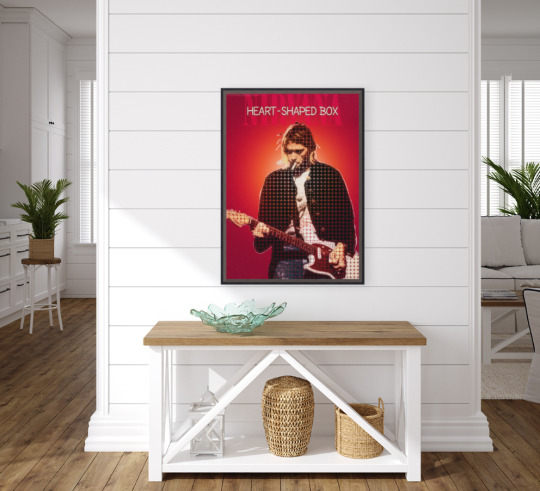
Early history
"Heart-Shaped Box" was written by Cobain in early 1992 at the apartment in the Fairfax district of Los Angeles, California, he shared with his wife, the American musician Courtney Love. In a 1994 Rolling Stone interview with David Fricke, Love recalled hearing Cobain work on the guitar riff for the first time:
The only time I asked him for a riff for one of my songs, he was in the closet. We had this huge closet, and I heard him in there working on 'Heart-Shaped Box.' He did that in five minutes. Knock, knock, knock. 'What?' 'Do you need that riff?' 'Fuck you!' Slam. [Laughs] He was trying to be so sneaky. I could hear that one from downstairs.
Cobain briefly set the song aside, then resumed work on it after he and Love moved to an apartment in Hollywood Hills, Los Angeles. Nirvana's first attempts to work on it were unsuccessful; Cobain said he waited for bassist Krist Novoselic and drummer Dave Grohl "to come up with something but it just turned into noise all the time". Eventually, during one jam session, Cobain said he "came up with the vocal style instantly and it just all flowed out real fast. We finally realized that it was a good song."
"Heart-Shaped Box" was first performed live on January 16, 1993, at the Hollywood Rock Festival in São Paulo, Brazil. It was first recorded in the studio a few days later, at BMG Ariola studios in Rio de Janeiro. Producer Craig Montgomery recalled hearing the song during the band's soundcheck in São Paulo, saying that "even then Kurt knew this was the single … All the other [new] stuff they had was way more noisy and abrasive than this. Even the other sound guys that were out there on the platform with me were going, 'Yeah, this is a good song.'" The band's guitar tech, Ernie Bailey, also had a positive initial reaction to the song in Brazil, saying that "you could tell this was an important song, in a lot of ways. You knew that it just had a lot of weight to it, even the first time you heard it."
Read more: Biography Kurt Cobain (1967-1994)
youtube
Two versions of the song were recorded at BMG Ariola, with the initial take being done to test the studio's equipment. The second take was posthumously released on the band's rarities box set, With the Lights Out, in November 2004, and on the compilation album Sliver: The Best of the Box in November 2005. On January 23, the band again performed "Heart-Shaped Box" live, at the Hollywood Rock Festival in Rio de Janeiro. These early versions of the song featured unfinished lyrics and what music journalist Gillian G. Gaar called "a far more experimental solo, more akin to the group's improvs".
There is a plastic-fetus collage on the back cover of In Utero that was designed by Kurt Cobain. This contributed to the album almost getting banned at K-Mart and Wal-Mart. The stronger reason that Wal-Mart wanted to ban the album was that it included a song entitled "Rape Me." However, Wal-Mart in the end did NOT ban the song, because Kurt Cobain conceded by providing them with a version that was slightly altered on the exterior, with the song "Rape Me" listed as "Waif Me," and with the image on the back being a zoom-in of one small part of the original back cover, so that it was difficult to tell that the image was of plastic fetuses. Bassist Krist Novoselic has commented that he told Kurt it wasn't worth it to pander to Wal-Mart like that, and recalls that Kurt responded by saying that Wal-Mart was the only store he could go to when he was a kid and that he didn't want any young fans to be unable to buy their album because of this.
Nirvana's songs "Milk It" and "Marigold" also appeared on the single. The lyrics, "Throw down your umbilical noose so I can climb right back" could be Cobain's way of saying that he wants to climb back into his mother's womb and restart his life. Calling it an umbilical noose indicates his suicidal tendencies.
Evanescence recorded an acoustic version that was released on their "Going Under" single in 2003.
The video, directed by Anton Corbijn, is rather odd and depicts a little girl in what seems to be a Ku Klux Klan uniform and an old man with a Santa hat on dressed like Jesus and tying himself to a cross. It also shows a rather large woman wearing a suit of meat for the verse "meat eating orchids forgive no one just yet." Later in the video her uniform turns black and she tries to snatch unborn babies from a tree.
youtube
Another prevalent theory is that Kurt Cobain wrote the song about a stash of old love letters his wife, Courtney Love, was given by former flame Billy Corgan of the Smashing Pumpkins.
Heart-Shaped Box is also the title of Joe Hill's (Stephen King's son) debut novel about a lonely retired rock star who receives a mysterious heart-shaped box in the mail. Hill explained the significance of the title and its connection to Cobain: '"Heart-Shaped Box,' the song, is likewise about feeling trapped and isolated. Also, the novel is in part about the way a certain kind of very unhappy person will use loud, intense music to hold self-destructive urges at bay, something I think [Kurt] Cobain tried very hard to do. But I only made a mental connection between the two things because of a lucky accident. I was writing the scene where UPS delivers the ghost–in reality, a haunted suit–and I was listening to iTunes, and Nirvana's 'Heart-Shaped Box' just came up on random play. So I put the haunted suit in a giant heart-shaped box, and, eventually, it became clear that ought to be the title."
Initially, In Utero was going to be called "I Hate Myself and I Want to Die" - Kurt Cobain's typical response to "How are you?" The final title was taken from a poem written by Courtney Love.
A live version appears on 1996 Nirvana album From the Muddy Banks of the Wishkah.
Kevin Kerslake, who had previously directed videos for "Come as You Are," "Lithium," "In Bloom" and "Sliver," sued Nirvana over this video. He did some work on it before Nirvana elected to go instead with a Dutch director named Anton Corbijn. Cobain brought a highly detailed treatment to Corbijn, who ended up using this vision for the final shoot.
Read more: Songfacts Come As You Are by Nirvana
The distinctive video became the most-played MTV spot, officially declared as such by Billboard on November 20, 1993. However, Kerslake returned to the scene and sued the band for copyright infringement, claiming that his ideas were the ones Cobain had presented Corbijn with. The band settled with Kerslake out of court.
"Heart-Shaped Box" was the final song performed at Nirvana's last concert, on March 1, 1994, in Munich, Germany. It was also the final Nirvana song to receive a music video before the suicide of Cobain in April 1994. The video, directed by Anton Corbijn, won two awards, including Best Alternative Video, at the 1994 MTV Video Music Awards.

All posters “Kurt Cobain” can be found here: Pictorem , elephantstock , UrbanArts , FineartCanvas , threadless , Juniqe 🛒
#music poster#kurt cobain quotes#kurt cobain#heart shaped#song fact#music posters#popular songs#music#Youtube
0 notes
Text
Songfacts Rocket Man by Elton John
"Rocket Man (I Think It's Going to Be a Long, Long Time)" is a song written by English musician Elton John and songwriter Bernie Taupin and performed by John. It was originally released on 17 April 1972 in the US, as the lead single to John's album Honky Château. The song first charted in the UK on 22 April, rising to No. 2 in the UK Singles Chart and No. 6 in the US Billboard Hot 100, becoming a major hit single for John.
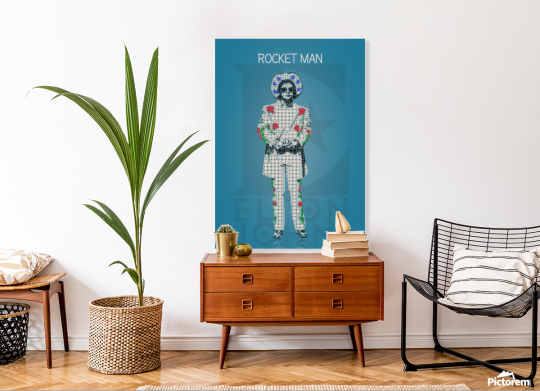
On 5 April 2024, the song was certified triple platinum by the British Phonographic Industry (BPI) for sales and streams of 1,800,000 digital downloads and streaming equivalent sales. With sales of 3 million in the US the song was certified triple platinum by the Recording Industry Association of America (RIAA). Rolling Stone lists it at No. 149 of its 500 greatest songs of all time. On 6 January 2024, Rocket Man surpassed 1 billion streams on Spotify.
The song has been covered by many artists, most notably by Kate Bush in 1991 with a reggae-tinged version, and by Portuguese singer David Fonseca in 2007. John himself, alongside producer Pnau and singer Dua Lipa, included the song in his 2021 mashup single "Cold Heart (Pnau remix)". William Shatner's spoken-word version from 1978 has been widely parodied.
Songfacts
Space exploration was big in 1972; the song came out around the time of the Apollo 16 mission, which sent men to the moon for the fifth time.
The inspiration for Bernie Taupin's lyrics, however, was the short story The Rocket Man, written by Ray Bradbury. The sci-fi author's tale is told from the perspective of a child, whose astronaut father has mixed feelings at leaving his family in order to do his job. It was published as part of the anthology The Illustrated Man in 1951.
Bradbury's story was the basis for another song called "Rocket Man," which was released by the folk group Pearls Before Swine (fronted by Tom Rapp) in 1970. Taupin says that song gave him the idea for his own "Rocket Man" ("It's common knowledge that songwriters are great thieves, and this is a perfect example," he said). In the Pearls Before Swine song, a child can no longer look at the stars after his astronaut father perishes in space.
This was produced by Gus Dudgeon, who worked with David Bowie on his 1969 song "Space Oddity." Both songs have similar subject matter, and lots of people accused Elton of ripping off Bowie, something both Elton and Bernie Taupin deny.
The opening lyrics came to Bernie Taupin while he was driving near his parents' house in Lincolnshire, England. Taupin has said that he has to write his ideas down as soon as they show up in his head, or they could disappear, so he drove though some back roads as fast as he could to get to the house where he could write down his thought: "She packed my bags last night, pre-flight. Zero hour, 9 a.m., and I'm gonna be high as a kite by then."
From there he came up with the song about a man who is sent to live in space as part of a scientific experiment. The song can be interpreted as a symbol of how rock stars are isolated from their friends, family and from the real world by those with power in the music industry. Some lyric analysis as part of the rock star isolation theory:
"I'm burning out his fuse up here alone" - Rocketing through space on stage.
"Higher than a kite" - Feeling outside the box called normal.
"Mars" - "The place he is when he's high; don't need to be raising children when you're an addict. It's a "cold" place, being an addict and larger than life when you want to be "Normal" and a "Rocketman" at the same time.
The most commonly misheard lyric in this song is "Rocket Man, burning out his fuse up here alone." This was the centerpiece of a 2011 commercial for the Volkswagen Passat, where folks came up with all kinds of interpretations of the last few words: telephone, cheap cologne, motor home, provolone. A couple in a Passat can correctly interpret the words thanks to the car's premium sound system, and all is well. This wasn't the first time the song was used in a commercial; it was also featured in ads for AT&T.
"Rocket Man" became a nickname for Elton John. As song-based nicknames go, it's a good one, and Elton embraced it (Madonna hates the "Material Girl" moniker). In 1973, he started a record company called Rocket Records, which was the label that released Neil Sedaka's comeback songs. In 2019, a biopic (billed as a "musical fantasy") called Rocketman was released starring Taron Egerton as Elton John.
Around the 2:20 mark, some synthesizer comes into the mix, accentuating the space motif. Elton didn't dabble in synths, so a studio engineer named Dave Hentschel played it. Hentschel operated an ARP 2500 synthesizer at Trident Studios in London, where producer Gus Dudgeon did overdubs and mixing for the album. When Dudgeon found out they had the synth, which was introduced in 1971, he had Hentschel play it and ended up using it in the final mix.
Hentschel got the call again on the Goodbye Yellow Brick Road album when Dudgeon had him create the opening section to "Funeral For A Friend / Love Lies Bleeding" on the ARP. In the 1977 movie Close Encounters Of The Third Kind, an ARP 2500 plays the notes that summon the aliens.
When Elton played the Soviet Union in 1979, this was listed on the program as "Cosmonaut."
youtube
This was Elton's biggest hit to that point, outcharting his first Top 10 entry, "Your Song." It had a huge impact on his psyche, as it gave him the confidence to know that he could sustain his career in music. Baseball pitcher Roger Clemens' nickname was "The Rocket," which led to lots of highlight videos of him pitching in slow motion with this song playing in the background. He earned the nickname because of his outstanding fastball, but later came under scrutiny when the league learned that his rocket fuel may have been steroids. Clemens denied the allegations and was never convicted of steroid use.
Kate Bush covered this in 1991 for an Elton John tribute album called Two Rooms (a reference to John and Taupin writing separately). Her version hit #12 in the UK.
Bush told NME that this is one of her favourite songs of all time. "I remember buying this when it came out as a single by Elton John," she said. "I couldn't stop playing it – I loved it so much. Most artists in the mid seventies played guitar but Elton played piano and I dreamed of being able to play like him."
When years Elton and Bernie Taupin asked Bush to record one of their songs for Two Rooms, she chose "Rocket Man." They gave her complete creative control which was both exciting and a bit daunting for the singer. "I wanted to make it different from the original and thought it could be fun to turn it into a reggae version," she said. "It meant a great deal to me that they chose it to be the first single release from the album."
William Shatner performed a spoken-word version of this song at the 1978 Science Fiction Film Awards, for which he was the host. Bernie Taupin did the introduction.
At a show in Anaheim, California on August 22, 1998, Jim Carrey joined Elton for a duet of this song. Carey gave a real performance before sitting at the piano and bashing his head into the keys.
On an episode of the television show Family Guy, Stewie does a spoken version of this song.
This was used in a 2017 commercial for Samsung's Gear VR where an ostrich learns to fly after using the flight simulator on the device. Speaking at the United Nations on September 19, 2017, American president Donald Trump excoriated North Korean leader Kim Jong Un, referring to him as "Rocket Man" because of his missile program. "Rocket Man is on a suicide mission for himself," Trump declared. This song immediately began trending.
This wasn't the first time the phrase was used in this context: The Economist put Kim Jong Un's father, Kim Jong Il, on the cover of their July 8, 2006 issue with the headline "Rocket Man."
Trump is a fan of the song, and often played it at his campaign rallies. However, Bernie Taupin disapproved of the president's usage of the title. "The context bothered me," he told the Wall Street Journal. "The thought that World War III could start over the use of my song title was disturbing. I also was uncomfortable that something of mine that was culturally iconic could be used in such a way."
"But what could I do? Sue him for cultural appropriation?" Taupin continued. "As a songwriter, you're powerless to stop something like that. However, if the use of 'Rocket Man' results in peace, I will be very happy to take full credit for it."
American country group Little Big Town covered the song for the 2018 Elton John tribute album Restoration. Their version features sounds from NASA's Mission Juno. The Juno project explored the planet Jupiter unlocking some of the secrets of the planet and the sounds from Juno's Waves radio instrument were weaved throughout Little Big Town's harmonies.

"One of the main reasons why we chose 'Rocket Man' was because we were so intrigued by not just, of course, Elton John, but by using the sounds from the Juno project so we had all these Jupiter noises," said Little Big Town's Karen Fairchild.
With the song title rendered as one word, Rocketman, is the name of the 2019 jukebox musical about Elton John, with Taron Egerton in the starring role. Egerton sings most of the songs in the film, including "Rocket Man." His version got a huge audience with the American figure skater Nathan Chen used it in his gold-medal winning routine at the 2022 Beijing Olympics.
Elton John and Dua Lipa's 2021 collaborative song "Cold Heart" finds Lipa performing lyrics from "Rocket Man" for its chorus. The club-ready single, featuring production from Australian dance music trio PNAU, gave Elton his first UK #1 in 16 years.
Get the “Elton John” poster on Pictorem , displate , ElephantStock , Juniqe
0 notes
Text
Inside Biggie Smalls' Final Days and Drive-By Murder in Los Angeles
Eager to forge peace after the fatal shooting of friend-turned-rival Tupac Shakur, the 24-year-old rapper instead met the same fate in the early morning hours of March 9, 1997.
By early 1997, Christopher Wallace, better known Biggie Smalls or The Notorious B.I.G., was seeking to squash the East Coast-West Coast rap feud that many felt had fueled the September 1996 murder of his friend-turned-rival Tupac Shakur.
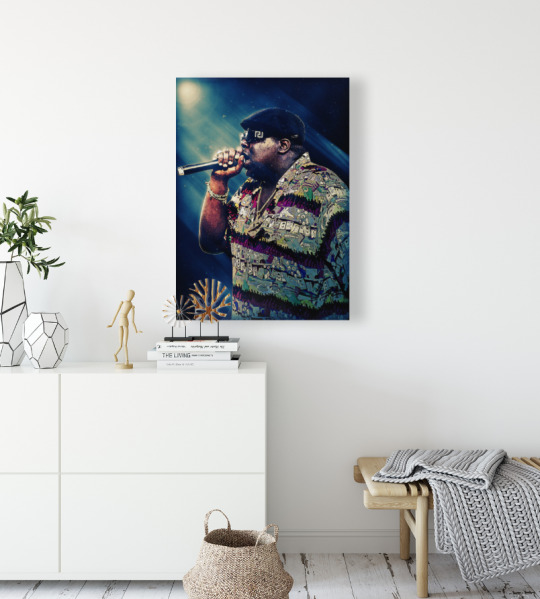
Now the father of a young son, and recently removed from a car accident that had left him using a cane to walk, Wallace was determined to see his dreams through as he finished up his sophomore album for Sean "Puffy" Combs' Bad Boy Entertainment, Life After Death. He traveled to L.A. to shoot the video for its lead single, "Hypnotize," in February 1997, and stuck around for the Soul Train Music Awards, sitting for interviews in which he expressed sadness at Shakur's death.
Despite his efforts at peacemaking, the L.A. music crowd gave the Bad Boy contingent a cool reception when they appeared on stage at the March 7 awards show, with Wallace stepping forward to booing when he announced Toni Braxton as the winner of best R&B/soul single.
Wallace made a last-minute decision to leave the safety of his hotel With an originally planned trip to Europe canceled, Wallace found himself with little to do at the Westwood Marquis hotel on March 8. According to Vibe, he spent much of the day with his agent, Phil Casey, discussing plans for an upcoming tour.
Itching to get out, the rapper convinced his boys to head to an industry party at the Petersen Automotive Museum in the Miracle Mile district, co-sponsored by Quincy Jones' Vibe magazine. As Combs later recounted, attending a Jones party on the outskirts of Beverly Hills seemed a safe enough move.
And for a while, it was. Although several known gang members had managed to infiltrate the guest list, the overall vibe was said to be a happy one. Wallace drank Dom Perignon with his crew and soaked in the adulation alongside fellow artists like Aaliyah and Missy Elliott, the speakers pounding out "Hypnotize" every 10 minutes or so. "I was throwin' paper at him, tellin' him how much I liked his record," recalled then-Def Jam CEO Russell Simmons. "I told him I wanted to be like him. He was so cool, so funny and calm."
However, the venue soon became a little too cramped and at around 12:30 am, the fire department shut down the festivities.
The rapper was ambushed at a red light Wallace and Combs trickled out with the rest of the partygoers, pausing to pose for pictures before cranking up a car stereo to blast some tracks from Life After Death.
Deciding to head back to their hotel, Combs jumped into the first of three cars with several bodyguards. Wallace settled into the front passenger seat of the second, a Green GMC Suburban, next to his driver, Gregory "G-Money" Young, with two more friends in the back.
Combs' lead SUV promptly blew through a yellow light, leaving Wallace's group idling at the intersection of Wilshire Blvd and Fairfax Ave. Suddenly, a white Toyota Land Cruiser made a U-turn and tried to squeeze in the space behind the Green Suburban.
At that moment, a dark Chevy Impala pulled up next to Wallace. The driver, an African American man in a blue suit and a bowtie, made eye contact with the rapper, before reaching over and emptying his automatic pistol at the car.
Amid the commotion – the shots were fired mere yards from the crowd outside the museum – the shooter sped off on Wilshire. Meanwhile, Combs abandoned his SUV and raced across the street to the Green Suburban, where he found his friend hunched over, his tongue out, and bleeding on the dashboard.
He died shortly afterward despite near-immediate medical attention A driver floored it to the nearby Cedars-Sinai Medical Center, where six people managed to lift the almost 400-pound rapper onto a gurney and send him in for emergency surgery. But despite the quick medical attention, the four bullets had already done their fatal damage, and 24-year-old Wallace was pronounced dead at 1:15 a.m.
Read more: Songfacts Hypnotize by The Notorious B.I.G.
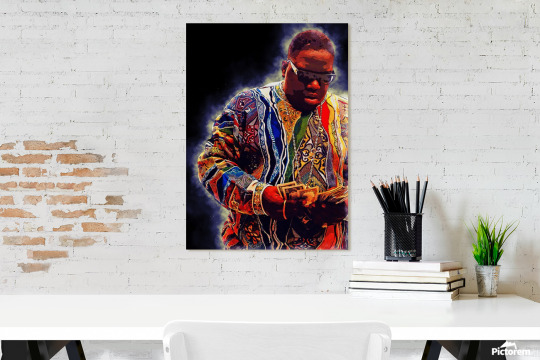
At a time when his family, friends and associates expected to be celebrating another milestone, they instead found themselves processing his stunning loss. One week after Wallace's March 18 funeral, Life After Death debuted to great acclaim, en route to a spot among the top-selling rap albums in history.
Wallace's murder sparked a controversial investigation and a wrongful death suit filed by his mother against the city, but, as with Shakur's, it remains unsolved, a sad reminder of the artist's noble but unsuccessful attempt to end the violence before it made him a victim.
All posters “Biggie Smalls” can be found here: Pictorem , Displate , Juniqe , Urbanarts 🛒🛒
0 notes
Text
Spanning decades and genres, this collection is the ultimate fun and romantic February 14 playlist
There are tons of ways to express heartfelt Valentine's Day wishes to all the special people in our life on February 14. You can send flowers, write sweet Valentine's Day quotes in a card, or cook an intimate Valentine's Day dinner. Another easy way to shower those closest to you with love is to say it with a song. Because we can't always find just the right words to say how we feel, luckily there are plenty of talented musical artists who sum it all up for us! We've rounded up some of the best Valentine's Day songs ever, as well as the greatest love songs of all time, to create a romantic soundtrack for Valentine’s Day this year.

Whether you're going out or staying in, these tunes set the mood right away with the most romantic song lyrics. Some will give you butterflies about meeting the one you love, some will for sure make you cry. The list features obvious love song heavy hitters, like Frank Sinatra, Adele, and Elvis Presley. And while there are plenty of songs about Valentine's Day (and even some songs with valentine in the title!), including tracks from Bruce Springsteen and George Michael, we've made sure to include some classic country love songs too, like Dolly Parton's "I Will Always Love You."
Play this list straight through or use it to jumpstart your own playlist for your special someone (one of our favorite Valentine's Day ideas for couples!) Add "your song," as well as tunes you listened to on your first date, memorable road trips, or your wedding day. One thing's for sure, these classic Valentine’s Day songs will create a wonderfully dreamy backdrop to celebrate love on February 14 and all year long.
1. "Something" by The Beatles
The lyrics to this Beatles classic are certainly tender and sweet—but the accompanying music video starring the Fab Four and their significant others really brings "Something" into the tear-jerker status of all-time great love songs. “Something” by The Beatles, a timeless ode to love, captures the essence of romance. With George Harrison’s soulful vocals and poignant lyrics, it’s a classic choice for Valentine’s Day serenades.
2. "Love Me Tender" by Elvis Presley
There are few love ballads that are as enchanting as this Elvis track, which stood the test of time and has been covered countless times. Picture a moonlit dance floor, Presley’s velvet voice whispering sweet promises—this classic is born to be one of the greatest Valentine’s day music.
3. "Love of My Life" by Queen
Freddie Mercury dedicated this ballad to his ex Mary Austin and is featured on Queen's 1975 album A Night at the Opera.
4. “Careless Whisper” by George Michael
The song's enduring appeal has led to numerous covers and performances by various artists over the years. Its iconic saxophone solo and heartfelt lyrics have made it a staple of 1980s pop music and a favorite among fans of romantic ballads.

5. "Thinking Out Loud" by Ed Sheeran
Cliché in all the right ways, this love ballad about growing old with your loved one became an instant classic the moment it was released. The contemporary love hymn “Thinking Out Loud” by Ed Sheeran combines sentimental lyrics with a soulful melody. It is the ideal option for Valentine’s Day festivities due to its classic appeal and romantic atmosphere.
6. "I Have Nothing" by Whitney Houston
All about the fragile thing that is love, Whitney Houston is giving us all the feels. This song represents how lost you can be without the person you love, so you’re begging them to stay there with you. It’ll definitely show your S.O. on Valentine’s Day that you value them.

7. “Valentine’s Day” by Bruce Springsteen
This song was featured on Bruce Springsteen's 1987 album Tunnel of Love. This is a love ballad that combines the Boss’s unique musical appeal with poignant lyrics. Great beat to play on Cupid Day!
8. "Just the Way You Are" by Bruno Mars
Bruno Mars is serving some serious romantic feels with this one. He can’t stress enough how perfect the girl he loves is and that’s the exact kind of thinking your Valentine’s Day date wants to hear! It’s a win-win for sure.
9. "My Valentine" by Paul McCartney
This 2011 song features Eric Clapton, while actress Natalie Portman stars in the music video.
10. “Love Story” by Taylor Swift
Lastly, “Love Story” by Taylor Swift, a modern-day classic, is a Valentine’s anthem narrating a timeless romance. Swift’s enchanting storytelling and melodic charm make it a perfect ode to enduring love.
11. "You're Still the One" by Shania Twain
This heartfelt crossover ballad with lyrics like "You're still the one I want for life" and "You're still the one that I love, the only one I dream of" speaks to sticking it out in the name of love, no matter the odds.
12. "Rock With You" by Michael Jackson
Michael Jackson made all of us want to get up and dance with him with this song. “Rock With You” is about being in unison with your S.O. whilst being on the dance floor, and how he wouldn’t want to be anywhere else but there. This song will definitely get the “groove” going this Valentine’s Day.

13 “Perfect” by Ed Sheeran
“Perfect” by Ed Sheeran is a timeless Valentine’s anthem, resonating with pure love. Sheeran’s heartfelt lyrics and melodic harmony create a beautiful ode, making it a perfect choice for celebrating romance.
14. “Still Into You” by Paramore
The song, with cheerful melodies and Hayley Williams’ impassioned vocals, praises eternal love and romantic commitment.
15. “Adore You” by Harry Styles
Styles’ charismatic delivery and the catchy tune make it a charming choice for Valentine’s Day celebrations.
16. "Love me like you do" by Ellie Goulding
Ellie Goulding has got it right. The lyrics to this beautiful ballot are nothing short of romantic and if you have a crush this Valentine's day and haven't told them how you feel, play this song and they will get the message loud and clear.

17. "All You Need Is Love" by The Beatles
The Beatles first released this song during 1967's "Summer of Love" with a message that really can't be denied. This song is a cupid’s melody transcending eras and whispers love’s universal language on Valentine’s Day.
18. "Someone like You" by Adele
Chances are, if someone makes you feel at your best when you're with them, it's a love match. Adele makes this clear in this simple yet poignant hit off her Grammy Award-winning “21” album.

19. "Can't Help Falling In Love" by Elvis Presley
While this song has been covered dozens of times, the Elvis original is one that can't be beat. A love song for Valentine’s day with a magical touch. His smooth voice and sweet lyrics make it perfect for a special Valentine’s Day moment.
20. "All of Me" by John Legend
This is perhaps the newest classic love song that's become incredibly popular over the last decade. It's from John's fourth studio album, "Love in the Future."

21. "I Will Always Love You" by Dolly Parton
While the Whitney Houston cover is an undeniable classic, Dolly Parton's original version is slower and written as a farewell to Porter Wagoner before she went solo. A heartfelt ballad transcending love’s end. With soul-stirring vocals and poignant lyrics, it remains a timeless choice for Valentine’s Day emotions.
22. “My Funny Valentine” by Frank Sinatra
This song is like a musical love story. He sings about how the little quirks and imperfections of someone you love can make them even more special. It’s a classic choice for Valentine’s Day.

23. "My Heart Will Go On" by Celine Dion
This goosebump-inducing classic ballad deserves a spot on every romantic playlist. While you're at it, plan a cozy date night with one of these top romantic movies. With powerful vocals and poignant lyrics, it echoes the timeless passion that resonates perfectly on Valentine’s Day.
You can get the Valentine's Day edition poster found here: elephantstock , Pictorem , iCanvas , Urban arts, Fine Art Canvas , Juniqe 🛒
#valentines day#music poster#design#happy valentines#gift ideas#gift art#happy valentine's day#music
0 notes
Text
Song facts A Sky Full Of Stars by Coldplay Lyrics Meaning – Unraveling the Cosmic Love Metaphor
This song was recorded during the sessions for Ghost Stories with Avicii. The Swedish EDM artist was invited by Chris Martin to play the piano and his imprint can be heard on the song's majestic piano lines. Speaking with BBC Radio 1 DJ Zane Lowe, Martin, who usually tinkles the ivories on Coldplay's recordings admitted he felt like he was cheating on the band when he asked the Swede to play the piano instead of him.

Chris Martin said on Fuse: "What that song represents on Ghost Stories is the release after you've climbed the mountain - after you've done anything challenging. That's why that song is so unashamedly happy and danceable: because that's what it needed to be. I love singing it. I know we didn't break the mold, but it's just so fun to play."
A house-influenced piano-centric song with pounding bass drum, this is the closest Coldplay have come to recording a dance track.
Avicii also produced the track along with the band and Ghost Stories producers Paul Epworth, Daniel Green and Rik Simpson.
The song received its TV première on the April 29, 2014 episode of BBC 2's Later... with Jools Holland and four days later the band performed it on Saturday Night Live.
Martin told the hosts on The Kevin & Bean Show that after coming up with the idea for this song, he did something different. "What happens with our songs generally is that they get sent from the universe, however they come," he said. "I don't know where they come from, in the middle of the night they come through and I take it to the rest of the band and it gets layered up, like a car being built or something."
But this time around, he took the song straight to Avicii and had it produced by the Swedish EDM mastermind.
This was the last song Coldplay added to Ghost Stories and the band appreciated the "fresh injection" by Avicii. "The rest of the band was very gracious, as usual," Martin told Kevin and Bean. "So they said, 'We trust you and let's keep rolling.'"
Filmed by movie director Mat Whitecross (The Road to Guantanamo, Sex & Drugs & Rock & Roll, The Shock Doctrine), the song's music video shows Chris Martin walking through King Street in Newtown, Sydney kitted out like a one-man band, before being joined by the rest of Coldplay. 250 fans were also invited to march from Newtown's Courthouse Hotel.
Speaking during a Beat x Beat webcast, Chris Martin explained how the song was created. "It needs to be about unconditional love," he said. "There will be a point where you'll be like, 'OK, I got that out of my system. Now let's go dancing.'"
Martin added that he was listening to Katy Perry's music when he was writing Ghost Stories. He borrowed the way the Californian songstress' tunes have a repetitive chord pattern with a sing-along melody over the top for this track.
The song played after the acceptance speeches of President-elect Joe Biden and Vice President-elect Kamala Harris following their victory in the US 2020 presidential election. It was a favorite song of Biden's late son Beau; Chris Martin performed it at his funeral in 2015.
Afterwards, the song had a resurgence, topping the Dance/Electronic Digital Song Sales chart for the first time.
youtube
A Sky Full Of Stars by Coldplay Lyrics Meaning – Unraveling the Cosmic Love Metaphor
Lyrics
‘Cause you’re a sky, ’cause you’re a sky full of stars I’m gonna give you my heart
In the pantheon of modern ballads, Coldplay’s ‘A Sky Full Of Stars’ stands out not just for its soaring melody but also for the depth and complexity disguised within its seemingly simple lyrics. As listeners, we’re transported beyond the tangible, into a celestial love affair that speaks volumes about the human experience.
The beauty of ‘A Sky Full Of Stars’ lies in its ability to blend romantic euphoria with an existential yearning, all wrapped in a utopian soundscape. It’s a song that has captivated millions with its lyrical prowess and its unapologetic display of vulnerability. Let’s delve into the poetic cosmos that Chris Martin and his bandmates present to us through this melodic odyssey.
Luminous Love: The Metaphor of a Celestial Romance
From the very first line, ‘A Sky Full Of Stars’ opens up the firmament for an intimate love story. Stars have long been used as symbols of destiny and the unreachable, yet here they are a sign of something within arms’ reach—a person so radiant that they fill the speaker’s entire vision. It’s about a love so intense and pure that it’s willing to surrender one of the most vital organs: the heart.
The celestial metaphor extends throughout the song, intertwining with the core theme of love. It’s not just about recognizing the beauty of the beloved but also seeing them as a beacon, a guiding light in the vast darkness that life can sometimes present. This duality parallels the conflicting natures of love—wholly illuminating, yet full of personal susceptibility.
The Paradox of Pain and Desire
The song bravely addresses the interplay between love and pain, almost as if acknowledging that the highest forms of love can bring about the greatest risks of heartache. ‘I don’t care, go on and tear me apart,’ the lyrics resound—a bold acceptance of potential hurt in the pursuit of an extraordinary emotional connection.
This masochistic honesty might not just speak to the personal experience but hints at the universal acceptance of pain as a currency for true love. The lover is both defiant and submissive in the same breath, which creates a push-and-pull dynamic that many listeners find relatable on a visceral level.
Memorable Lines: A Phrase That Captures the Soul
‘Cause you get lighter the more it gets dark’—in this line, we see the essence of what makes ‘A Sky Full Of Stars’ such a masterpiece. The phrase not only paints a vivid picture but encapsulates the paradoxical nature of the subject. As the darkness of life’s challenges mounts, the beloved’s presence brings an increasing sense of relief and hope.
It’s a sentiment that succinctly embodies the role of a partner in life’s journey—someone who provides solace when the weight of the world seems unbearable. Such lines leap out from the song, etching themselves into the fabric of our consciousness, repeating in our minds during moments of solitude and reflection.
Decoding the Hidden Meaning Behind the Stardust
The notion that the speaker ‘thinks’ they saw the beloved ‘in a sky full of stars’ suggests an aura of wonder and indefinite certainty. It’s not just about seeing but ‘thinking’ one sees, which evokes the essence of faith in love—a belief in something so profound yet unprovable. The stars represent both the crowdedness of life and the prominence of the beloved within it.
This mystical element transforms the song into an allegory about the search for meaning and connection in the universe. It’s a song not only about romantic love but about discovering one’s place amidst the infinite. It shares a kinship with the belief that amidst the vastness of existence, there’s someone who matches our heart’s cosmic pattern—a soul mate, to use the term colloquially.
A Heavenly View: The Quintessence of Coldplay’s Vision
The repeated reference to ‘heavenly view’ encapsulates the euphoria that permeates ‘A Sky Full Of Stars.’ This blissful state of being transcends the tangible world, inviting the listener to contemplate the ethereal and eternal. The love so described is otherworldly, yet the emotions it evokes couldn’t be more grounded in human experience.

The song concludes without a resolution, leaving us amid the stars to ponder our own interpretations of love and existence. It mirrors life’s journey towards harmony within chaos. Coldplay, once again, has achieved the extraordinary feat of crafting a song that serves as a mirror to both the personal inner worlds of its listeners and the universal human condition.
Poster Chris Martin by : iCanvas , elephantstock , Pictorem , Fine Art Canvas , Displate , Juniqe , threadless 🛒
0 notes
Text
Quotes Avril Lavigne
Life is like a roller coaster, live it, be happy, enjoy life. ― Avril Lavigne
What's the meaning of this quote?
Quote Meaning: This quote draws a vivid analogy between life and a roller coaster, conveying a perspective that encourages us to embrace the ups and downs, find happiness, and fully enjoy the journey.
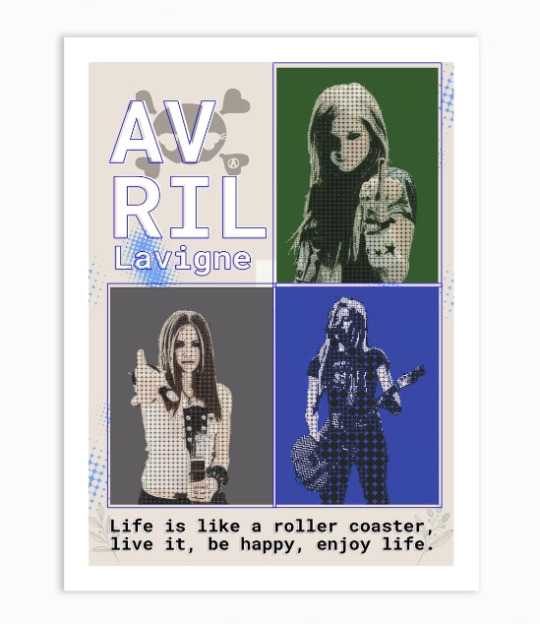
The quote begins by stating, "Life is like a roller coaster," highlighting the idea that life is filled with exhilarating highs and challenging lows, similar to the thrilling experience of riding a roller coaster. This comparison captures the unpredictable nature of life, where we encounter moments of excitement, joy, and fulfillment, as well as times of difficulty, uncertainty, and adversity.
The quote then continues with the imperative, "live it, be happy, enjoy life." These words inspire us to actively engage with life, to embrace all its twists and turns, and to make the most of every moment. It encourages us to cultivate a mindset that prioritizes happiness and the enjoyment of life's experiences. It reminds us that despite the inevitable challenges we may face, we have the power to choose how we respond and find joy along the way.
By likening life to a roller coaster, this quote reminds us that just as we anticipate and savor the thrilling moments on a ride, we should approach life with a sense of anticipation and appreciation for its diverse array of experiences. It encourages us to live in the present, to fully immerse ourselves in the richness of life, and to cherish both the exhilarating highs and the lessons learned from the challenging lows.

Poster by: Fy! , iCanvas, Pictorem , Art Heroes
Ultimately, this quote serves as a reminder to embrace life's unpredictable nature, to seek happiness, and to find fulfillment by actively participating in the journey. It urges us to let go of fear and hesitation, to live authentically, and to make the most of every twist, turn, and loop that life presents.
Who said the quote? The quote "Life is like a roller coaster, live it, be happy, enjoy life." was said by Avril Lavigne (Bio / Quotes). Avril Lavigne is a Canadian singer-songwriter known for her punk-influenced pop music and hits like "Complicated" and "Sk8er Boi."
How can the quote be applied in a real-life scenario? Imagine yourself strapped into a roller coaster, ascending to a towering peak. As you climb higher, your heart races with anticipation, your stomach churns with excitement, and you can't help but feel a mixture of fear and thrill. This quote beautifully captures the essence of life itself, emphasizing the importance of embracing the unpredictable journey.
In real life, this quote encourages us to fully immerse ourselves in the experiences life offers. Just as on a roller coaster, we encounter ups and downs, twists and turns, and moments of sheer joy followed by challenges. To apply this wisdom, one must adopt a mindset of living in the present, appreciating the highs, and finding the courage to face the lows.
Living life to the fullest means not merely existing but actively participating in the adventure. It involves pursuing our passions, building meaningful relationships, and savoring every moment, even the daunting ones. By doing so, we can extract happiness from even the most unexpected and challenging circumstances, just as we derive excitement from a roller coaster ride.
In summary, this quote encourages us to approach life with a sense of adventure, resilience, and optimism. It reminds us that, like a roller coaster, life's journey is filled with both exhilarating moments and unforeseen challenges, all of which contribute to our personal growth and happiness. So, buckle up, embrace the ride, and savor every twist and turn along the way.
Is there a historical example that illustrates the message of the quote? One of the most iconic examples of living life like a roller coaster and finding joy even in challenging circumstances can be found in the life of Helen Keller, a remarkable woman who overcame the obstacles of being both deaf and blind.
Helen Keller was born in 1880 in Tuscumbia, Alabama, and at the age of 19 months, she suffered a severe illness that left her unable to see or hear. In her early years, she lived in a world of darkness and silence, unable to communicate with others or fully understand her surroundings.
However, with the help of her dedicated teacher, Anne Sullivan, Helen learned to communicate through touch and Braille. With immense determination and a zest for life, she embarked on a journey that would inspire millions.
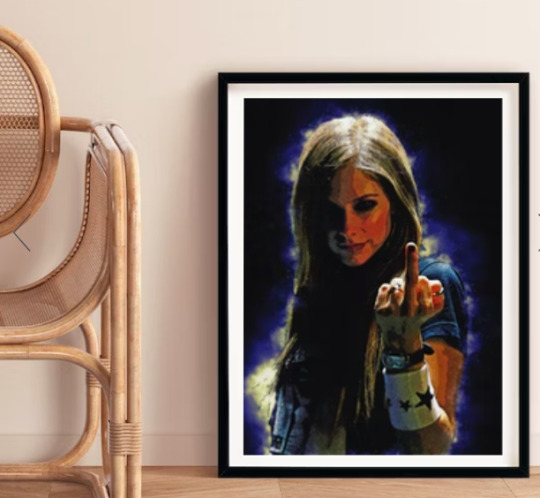
Poster by: Fy! , Pictorem , Urban arts
Helen Keller refused to be defined by her disabilities and instead chose to embrace life with enthusiasm and happiness. She became an avid learner, voraciously reading books in Braille and expanding her knowledge of the world. She attended college, authored several books, and became a renowned lecturer and advocate for people with disabilities.
Keller's life was indeed a roller coaster of challenges and triumphs, but she lived it to the fullest. She found joy in learning, in connecting with others, and in advocating for the rights of people with disabilities. Her positive outlook and determination to enjoy life in spite of her limitations inspired countless individuals around the world.
Helen Keller's journey reminds us that, like a roller coaster, life is filled with ups and downs, but it's how we choose to experience and embrace those moments that truly matter. Her life exemplifies the idea that regardless of the obstacles we face, we can find happiness and purpose by living life to its fullest and appreciating the beauty and opportunities it offers.
🛒 Poster Avril Lavigne by : iCanvas , Displate , Pictorem , elephantStock
0 notes
Text
Songfacts My Sweet Lord by George Harrison
Album: All Things Must Pass (1970)
This was Harrison's first single as a solo artist, and it was his biggest hit. The song is about the Eastern religions he was studying.
Highly unusual for a hit song, Harrison repeats part of a Hindu mantra in the lyric when he sings, "Hare Krishna… Krishna, Krishna." When set to music, this mantra is typically part of a chant that acts as a call to the Lord. Harrison interposes it with a Christian call to faith: "Hallelujah" - he was pointing out that "Hallelujah and Hare Krishna are quite the same thing."
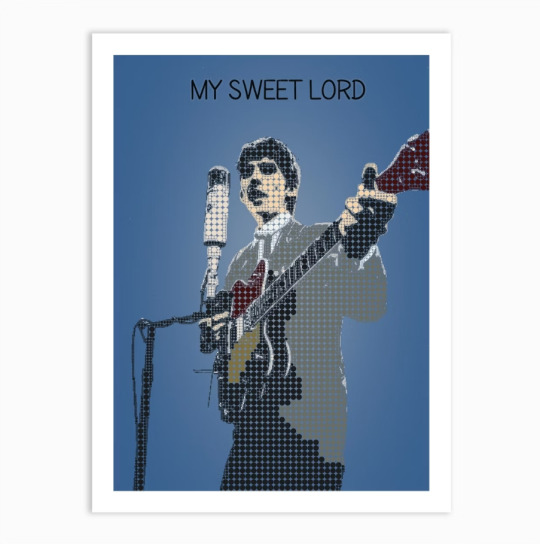
In the documentary The Material World, Harrison explains: "First, it's simple. The thing about a mantra, you see… mantras are, well, they call it a mystical sound vibration encased in a syllable. It has this power within it. It's just hypnotic."
In 1971, Bright Tunes Music sued Harrison because this sounded too much like the 1963 Chiffons hit "He's So Fine." Bright Tunes was controlled by The Tokens, who set it up when they formed the production company that recorded "He's So Fine" - they owned the publishing rights to the song.
During the convoluted court case, Harrison explained how he composed the song: He said that in December 1969, he was playing a show in Copenhagen, Denmark, with the group Delaney and Bonnie, whose piano player was Billy Preston (who contributed to some Beatles recordings). Harrison said that he started writing the song after a press conference when he slipped away and started playing some guitar chords around the words "Hallelujah" and "Hare Krishna."
He then brought the song to the band, who helped him work it out as he came up with lyrics. When he returned to London, Harrison worked on Billy Preston's album Encouraging Words. They recorded the song for the album, which was released on Apple Records later in 1970, and Harrison filed a copyright application for the melody, words and harmony of the song. Preston's version remained an album cut, and it was Harrison's single that was the huge hit and provoked the lawsuit, which was filed on February 10, 1971, while the song was still on the chart.
Songfacts Here Comes The Sun by The Beatles

In further testimony, Harrison claimed he got the idea for "My Sweet Lord" from The Edwin Hawkins Singers' "Oh Happy Day," not "He's So Fine."
When the case was filed, Harrison's manager was Allen Klein, who negotiated with Bright Tunes on his behalf. The case was delayed when Bright Tunes went into receivership, and was not heard until 1976. In the meantime, Harrison and Klein parted ways in bitter fashion, and Klein began consulting Bright Tunes. Harrison offered to settle the case for $148,000 in January 1976, but the offer was rejected and the case brought to court.
The trial took place February 23-25, with various expert witnesses testifying. The key to the case was the musical pattern of the two songs, which were both based on two musical motifs: "G-E-D" and "G-A-C-A-C." "He's So Fine" repeated both motifs four times, "My Sweet Lord" repeated the first motif four times and the second motif three times. Harrison couldn't identify any other songs that used this exact pattern, and the court ruled that "the two songs are virtually identical." And while the judge felt that Harrison did not intentionally copy "My Sweet Lord," that was not a defense - thus Harrison was on the hook writing a similar song without knowing it. Harrison was found guilty of "subconscious plagiarism" in a verdict handed down on August 31, 1976.
Assessing damages in the case, the judge determined that "My Sweet Lord" represented 70% of the airplay of the All Things Must Pass album, and came up with a total award of about $1.6 million. However, in 1978 Allen Klein's company ABKCO purchased Bright Tunes for $587,000, which prompted Harrison to sue. In 1981, a judge decided that Klein should not profit from the judgment, and was entitled to only the $587,000 he paid for the company - all further proceeds from the case had to be remitted back to Harrison. The case dragged on until at least 1993, when various administrative matters were finally settled.
The case was a burden for Harrison, who says he tried to settle but kept getting dragged back to court by Bright Tunes. After losing the lawsuit, he became more disenfranchised with the music industry, and took some time off from recording - after his 1976 album Thirty Three & 1/3, he didn't release another until his self-titled album in 1979. He told Rolling Stone, "It's difficult to just start writing again after you've been through that. Even now when I put the radio on, every tune I hear sounds like something else."
This was recorded at Abbey Road studios using the same equipment The Beatles used. There were some familiar faces at the sessions who had contributed to Beatles albums, including John Lennon, Yoko Ono, Billy Preston and Eric Clapton. Bobby Whitlock was friends with Harrison and Clapton, and played keyboards on the album. When Songfacts spoke with Whitlock, he shared his thoughts:
"That whole session was great. George Harrison, what a wonderful man. All the time that I ever knew him, which was from 1969 to his passing, he was a wonderful man. He included everyone on everything he did because there was enough for all."
Whitlock adds, "All during the sessions, the door would pop open and in would spring three or four or five Hare Krishnas in their white robes and shaved heads with a pony tail coming out the top. They were all painted up, throwing rose petals and distributing peanut butter cookies."
This was the first #1 hit for any Beatle after the band broke up. Harrison became the first Beatle to release a solo album when he issued Wonderwall Music, the soundtrack to the movie Wonderwall, in 1968.
When this song was released, the phrase "Hare Krishna" was associated with a religious group called the International Society for Krishna Consciousness, whose members would often approach passengers in airports, seeking donations and trying to solicit members. Individuals in this group became popularly known as "Hare Krishnas," with a generally negative connotation.
‘While My Guitar Gently Weeps’: The Story Behind The Beatles’ Song
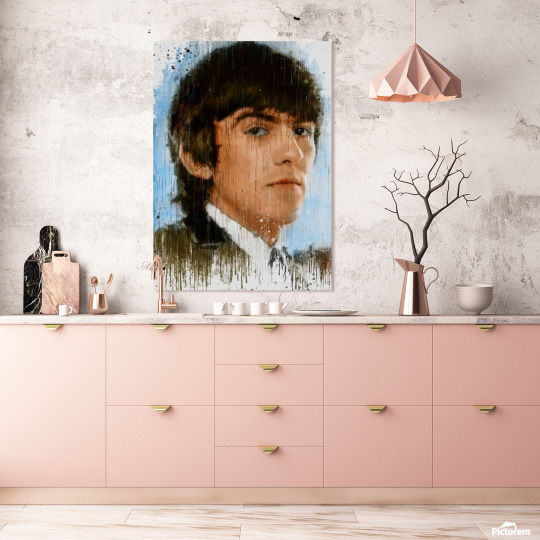
Artists who record chant music often face a negative reaction from listeners who don't understand the mantras. When Songfacts spoke with Krishna Das, the leading American chant musician, he explained: "'My Sweet Lord' is very clear and very beautiful, but the problem is that English has been appropriated by Western religion and it's very hard to talk about spiritual things in a song that doesn't get too 'organized religion-y,' you know? And then you get a lot of people who have a negative reaction to that as well. You can get a lot of negativity from the organized religion people. Like, 'This isn't our Jesus. This isn't the way it is.'"
Phil Spector produced this and sang backup. With the blessing of Harrison and John Lennon (and over the objections of Paul McCartney), Spector produced the last Beatles album, Let It Be. In an interview with Howard Stern, Peter Frampton verified that he played lead guitar on "My Sweet Lord." According to Frampton, Harrison was a fan of his and invited him to the studio, where he handed Frampton his legendary Les Paul. Frampton assumed he was going to play rhythm, but Harrison said he wanted him to play lead, so Frampton did. Frampton wasn't officially credited for this (just as Eric Clapton wasn't credited on "While My Guitar Gently Weeps"), but rumors circulated for years.
George Harrison's mother was Catholic and sometimes took him to church. By the time he was 12, George decided the Catholic church was "bulls--t," and shied away from religion in general. Learning about Indian music and spirituality sparked him to explore further, and he found they suited him. In 1968, he went to India with the other Beatles, where he studied Transcendental Meditation with Maharishi Mahesh Yogi. They became disenchanted with the Maharishi and left early, but Harrison dove deeper into his studies.
The Catholic vision of faith - believing in God without seeing Him - didn't sit well with Harrison. He found a more compelling case in Eastern philosophy; his gateway was Ravi Shankar, a top Indian musician who taught Harrison how to play sitar. Shankar taught him about swamis and yogis, and gave him a book by Swami Vivekananda, the first Indian swami to come to America.
Speaking with Timothy White in 1992, Harrison explained: "In his book he said, 'If there's a God we must see him. If there's a soul we must perceive it. Otherwise, it's better not to believe. It's better to be an outspoken atheist than a hypocrite.'
And when I read that after all that stuff I'd been through with the Church, with 'You just believe what we tell you. And don't ask questions.' Whereas the Swami's saying, 'If there's a God we must see him.' I thought, 'Right on, that's the one for me!' If there's a God, I want to see him."
Producer Phil Spector thought "My Sweet Lord" was the commercial hit of the album, and everyone else resisted him on that. According to Phil, George and others worried about how the public might react to the religious overtones and the Hare Krishna influence.
After Harrison died, this was re-released in the UK, where it once again went to #1. Proceeds from the single went to the Material World Charitable Foundation, which Harrison started in 1973 to support charities that work with children and the poor.
Songfacts Something by The Beatles

Poster by urban arts ,
George Harrison parodied "My Sweet Lord" during Eric Idle's Rutland Weekend Television Christmas special on December 26, 1975, turning it into "The Pirate Song."
Artists to cover this song include Aretha Franklin, Johnny Mathis, Richie Havens, Nina Simone, Peggy Lee and Julio Iglesias. The Chiffons also covered the song in 1975 amidst the plagiarism lawsuit over their song "He's So Fine."
The guitar riff on America's 1975 #1 hit "Sister Golden Hair" was inspired by this track. That song was produced by George Martin, who worked on most of The Beatles albums.
Gerry Beckley, who wrote "Sister Golden Hair" and sang lead, said in his Songfacts interview: "I very openly tip my hat there to 'My Sweet Lord' and George Harrison. I was such a fan of all The Beatles but we knew George quite well and I just thought that was such a wonderful intro." U2 performed this as a tribute at their show in Atlanta on November 30, 2001, the night after Harrison died. This was one of several '70s hits used in the 2017 movie Guardians of the Galaxy Vol. 2.
Harrison released a new version, "My Sweet Lord 2000," when he reissued All Things Must Pass.
During a flight from Los Angeles to New York in 1971, Harrison's plane was hit by lightning, causing severe turbulence. He recalled chanting the "hare krishna" mantra, which he credited with saving his life. Speaking with the Indian magazine Back to Godhead in 1982, he said: "I know for me, the difference between making it and not making it was actually chanting the mantra."
youtube
"My Sweet Lord" got a music video for the first time in 2021 as part of the 50th anniversary of All Things Must Pass. The video, directed by Lance Bangs with input from George's son, Dhani Harrison, stars Fred Armisen and Vanessa Bayer, who explore a library as part of a mysterious mission. It's loaded with famous faces, starting with Mark Hamill, who sends them on their mission. Others to appear include Patton Oswalt, Rosanna Arquette, Ringo Starr, Olivia Harrison, Joe Walsh, Jeff Lynne, "Weird Al" Yankovic, Jon Hamm, and Reggie Watts.
🛒Poster George Harrison by : iCanvas , Fine Art Canvas , Displate , Pictorem , ElephantStock 🛒
0 notes
Text
Billie Eilish Biography
American singer and songwriter Billie Eilish became a pop superstar by way of her distinctive musical and fashion sensibilities and songs like "Ocean Eyes," "Bad Guy" and "Therefore I Am."

Who Is Billie Eilish?
Billie Eilish, Born and raised in Los Angeles, and gained immense popularity at a young age with her viral hit "Ocean Eyes." Collaborating with her brother, Finneas, she crafted the captivating songs for the EP Don't Smile at Me and the highly successful album When We All Fall Asleep, Where Do We Go?, propelling her to international stardom and earning her multiple Grammy awards, all before reaching the age of 20.
Early Life and Family
Eilish was born on December 18, 2001, in Los Angeles, California. Her parents, Maggie Baird and Patrick O’Connell, were longtime actors before joining their teenage daughter's professional team. Eilish's full name is Billie Eilish Pirate Baird O'Connell. Her first name is in honor of her maternal grandfather, William; the second was inspired by a conjoined twin her parents saw in a documentary; and the third came from the insistence of her older brother, Finneas.
Raised in a two-bedroom house in Highland Park, where she and her brother were homeschooled, Eilish was encouraged to pursue her interests in dance, gymnastics, horseback riding and especially music. She learned to play the Beatles' "I Will" on the ukulele at age 6; joined Los Angeles Children's Chorus at age 8; and began writing songs in earnest by age 11, her talents nurtured through her mother's songwriting class. Eilish has said her first "real" song, "Fingers Crossed," was penned around that time after watching an episode of The Walking Dead.
Brother Finneas
Finneas, who is four-and-a-half years older than his sister, assumed the role of her essential collaborator, co-writer, and producer. Despite Eilish's rise to global fame, the duo persisted in composing and recording together from the comfort of their bedroom in Highland Park.
Read more: Songfacts Bellyache
"Probably 75-80 percent of the songs are written with us sitting next to each other at a piano or with a guitar, singing a melody together," he told Variety in 2019. "It's like a relay race — we really feel like we both have to kill our portion of it to get to the finish line."
In October 2019, Finneas unveiled his solo EP Blood Harmony, while also collaborating as a co-writer and producer for renowned artists such as Justin Bieber, Selena Gomez, and Camila Cabello.
Albums and Songs
"Ocean Eyes"
Originally written for Finneas' band, "Ocean Eyes" sprung to life when infused with a 13-year-old Eilish's ethereal vocals and became a viral sensation upon being uploaded to SoundCloud in November 2015. A second SoundCloud offering, "Six Feet Under," was followed by her summer 2016 signing with Darkroom Records, which re-released both tracks as singles later in the year.
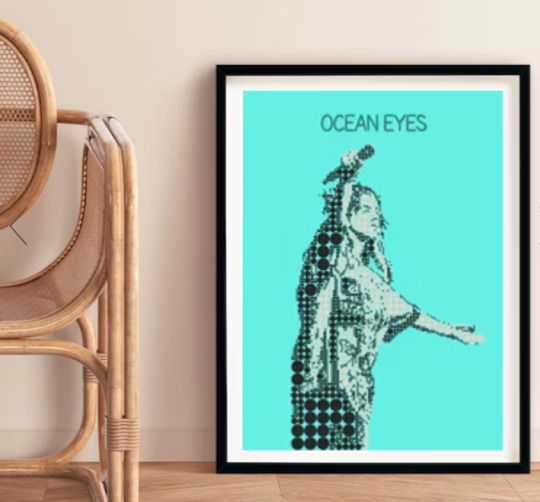
'Don't Smile at Me'
Eilish's popularity surged with the steady unveiling of singles from her August 2017 EP, Don't Smile at Me, with tracks like "Bellyache," "Copycat" and "My Boy" showcasing her willingness to explore dark and prickly terrain amid a stream of shifting but danceable electronic beats. Don't Smile at Me peaked at an impressive No. 14 on the Billboard 200 in January 2019, around which time Eilish became the youngest artist to top 1 billion streams on Spotify.
'When We All Fall Asleep, Where Do We Go?' and "Bad Guy"
The March 2019 arrival of Eilish's full-length album When We All Fall Asleep, Where Do We Go? came with the simultaneous release of "Bad Guy," the song that became the first megahit of her career. Still, the chart-topping album retained the early hallmarks of her unique style, from the whispered ruminations on drug use in "Xanny" to the jarring imagery of "Bury a Friend." Eilish also displayed her theatrical sensibilities in the riveting videos for those and other tracks; "When the Party's Over" shows the artist singing through the black liquid pouring from her eyes, while "You Should See Me in a Crown" features a spider crawling from her mouth.
Songfacts Bad Guy by Billie Eilish
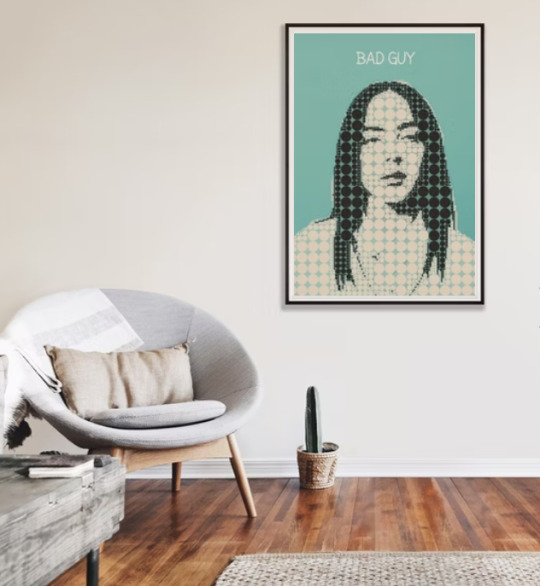
James Bond Soundtrack: "No Time to Die"
In January 2020, it was announced that the 18-year-old Eilish had become the youngest artist to write and record the title track for a James Bond movie. The ominous ballad "No Time to Die" landed the following month, before the film of the same name was delayed by the Covid-19 pandemic, and became her first single to reach the top spot in the U.K.
Read more: No Time To Die: The verdict on Billie Eilish’s James Bond theme
Eilish has additionally made contributions to the soundtracks of other endeavors. The songs "Bored" and "Lovely" were featured in the contentious Netflix teen series 13 Reasons Why, while "When I Was Older" was included in the musical lineup for Alfonso Cuarón's 2018 drama Roma.
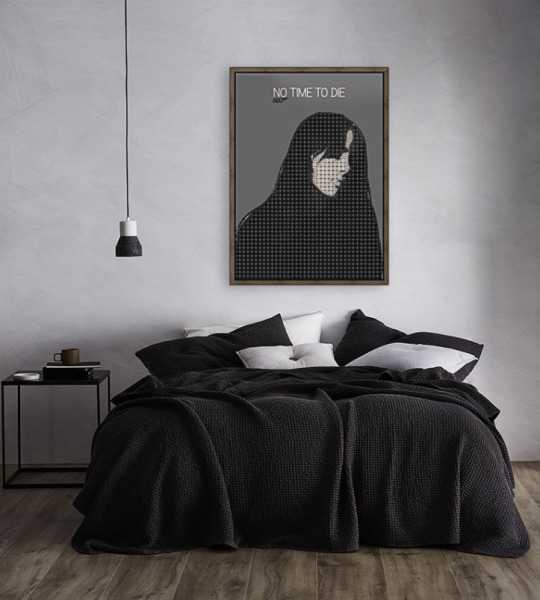
Awards
Eilish began earning her first major accolades in 2019 when she claimed wins at the MTV Video Awards and American Music Awards and was named Billboard's Woman of the Year. But her big moment came at the January 2020 Grammys, when she became the first woman and the second artist overall to sweep the "big four" categories of Album of the Year, Record of the Year, Song of the Year and Best New Artist, adding Best Pop Vocal Album for good measure.
Eilish won two awards at the 2021 Grammy awards, including Record of the Year for "Everything I Wanted."
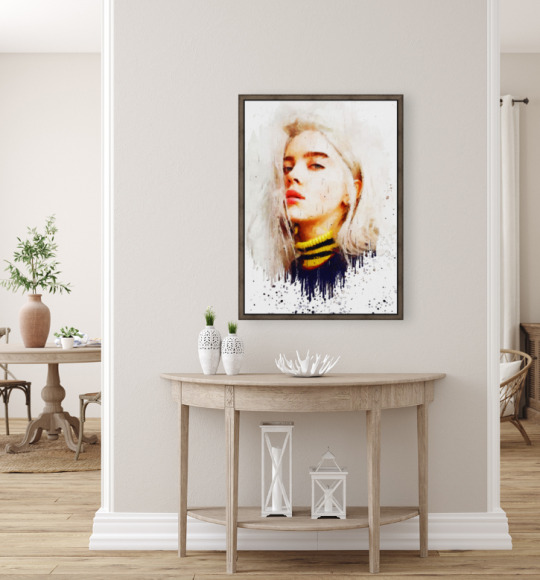
Clothes and Style
Eilish became known for wearing oversized clothing, a style born from discomfort with her body that bolstered her appeal as the antithesis of the polished pop starlet. She met the demand for her signature apparel with the early 2018 launch of her online shop, Blohsh, and established her own niche in the fashion world by signing with Next Models later that year.
Tours and Documentary
The artist embarked on her first headlining tour to back Don't Smile at Me in fall 2017 and returned to the road for much of the next two years, though her 2020 Where Do We Go? Tour was cut short and eventually canceled by the Covid-19 pandemic. In 2019, Eilish garnered significant acclaim for her captivating performances at renowned festivals such as Coachella and Glastonbury.
Read more: Songfacts When The Party’s Over
Her whirlwind schedule and life inside the eye of the storm became the focal point of the February 2021 documentary Billie Eilish: The World's A Little Blurry, which also features childhood footage, interviews with family members and the singer putting together her debut album.
Personal and Social Issues
A life-long vegetarian, Eilish made the transition to a vegan diet in 2014.
Eilish has been open about her struggles with mental health, telling Gayle King in early 2020 that she considered suicide even as she was being fêted the next big thing in pop music. In November 2018, the songstress also disclosed that she had been diagnosed with Tourette Syndrome during her childhood.
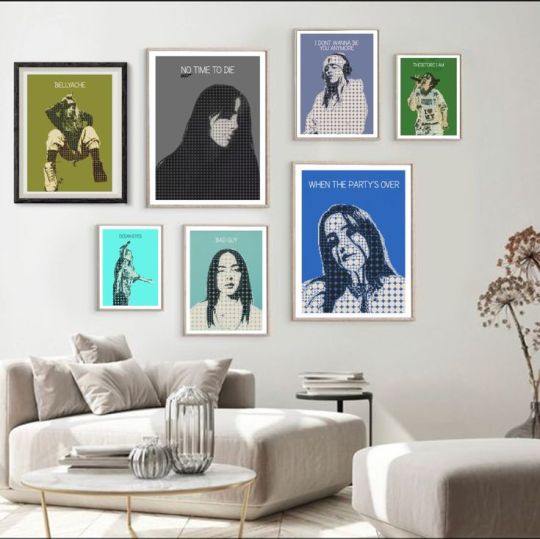
Eilish, known for her outspokenness regarding environmental matters, collaborated with actor Woody Harrelson in 2019 to create a video emphasizing the perils of climate change. Additionally, she has encouraged her fan base to engage in political participation, notably teaming up with Los Angeles Mayor Eric Garcetti in 2018 to launch an initiative aimed at registering high school students as voters.
👇 All posters “Billie Eilish” are found here 👇 Pictorem , Urban arts, Displate , ElephantStock 🛒
0 notes
Text
Songfacts Someone Like You by Adele
Adele, the English singer-songwriter, recorded the song "Someone like You" for her second studio album, 21 (2011). Co-written and produced by Adele and Dan Wilson, it serves as the album's second single and final track. The lyrics of the song reflect Adele's personal experience of a broken relationship and her journey towards acceptance. XL Recordings released the song as a single on 24 January 2011 in the United Kingdom, coinciding with the album's release, and on 9 August 2011 in the United States. Accompanied solely by a piano, played by co-writer Dan Wilson, Adele's vocals convey the emotions surrounding the end of her relationship with her former partner.

Poster by ElephantStock , iCanvas , Pictorem ,
This song is about getting over an ex, hoping to find another who can bring back those feelings that made it so special.
At a 2017 concert in Brisbane, Adele talked about the feeling that inspired this song. "I was trying to remember how it was I felt at the beginning of a relationship," she said. "Because as bad as a break up can be, as bitter and horrible and messy as it can be, that feeling when you first fall for someone is the best feeling on earth, and I am addicted to that feeling."
Adele took up with her partner Simon Konecki not long after she wrote the song - the couple had a child in 2012. "Obviously I can't go through with those feelings because I'm married now," Adele added. "I've found my next person."
Adele had boundless resources at her disposal, but all this song needed was two people, two days, and a studio with a grand piano. She wrote and recorded it at Harmony Studios in Los Angeles with Dan Wilson of the band Semisonic, whose co-writing credits include "Not Ready To Make Nice" with Dixie Chicks and "Hidden Away" with Josh Groban. The demo they recorded at the end of their second day (with Wilson on piano) ended up being so good that Adele decided to use it as the actual recording. She tried recording it with a band and a full orchestra, but couldn't beat that demo.
In a Songfacts interview with Dan Wilson, he said: "I had a small case of demo-itis about the version that Adele and I had done. But I honestly thought about my version with Adele as a demo and I never entertained the idea that it was going to be on the record. I was just hoping for the best possible more-fleshed-out version."

What's "demo-itis"? Wilson defines it as, "The general fact that you're always going to like the first version of a song you hear best."
Adele and Dan Wilson didn't know each other when they got together to write this song - it was the album's co-producer Rick Rubin who paired them up. She copped to knowing little about his work, but told him her mum was a big fan. (When Wilson wrote a song with Carol King - "One True Love" - on the 2001 Semisonic album All About Chemistry - he told her his mom was a big fan. "Thank you for making me feel old," she replied.) Before they got down to business, Wilson and Adele spent about 45 minutes getting to know each other and watching YouTube videos of rockabilly queen Wanda Jackson, which got them out of the present and into a mindset of a different era when songs were more enduring.
Adele told The Sun: "It's simple - just letting go. It makes me really upset. It's my most articulate song. It's just to the point, it's not trying to be clever, I think that's why I like it so much, because it's just so honest, no glitter on it."
This understated song was used at the closing track to the 21 album, and also released as the second single from the set, following "Rolling In The Deep."
Adele premiered this song on November 16, 2010 on Later Live with Jools Holland. It took off from there, reaching an audience that welcomed a song without synthesizers, Auto-Tune, or any kind of production sheen.
Most of 21's lyrics refer to Adele working through the ending of a relationship. In this song, she sings:
I heard that you're settled down That you found a girl and you're married now I heard that your dreams came true Guess she gave you things I wouldn't give to you
"We didn't try to make it open-ended so it could apply to anybody," said Wilson to Billboard magazine. "We tried to make it as personal as possible."
The songs on 21 come from a deep place. "The experience of writing this record was quite exhausting, because I would go from being a bitch to being completely on my knees," she said in an interview with UK newspaper The Daily Telegraph. "It was like the stages of my recovery. I was trying to explain to myself why the relationship broke down, to the point that I actually forgot about people hearing it.
When I did 'Someone Like You' live on Jools Holland, I got so upset wondering and hoping and wishing that my ex would be watching it, I went back to my dressing room and sobbed. Making a record is like standing in the middle of Trafalgar Square naked, you let everyone see your good bits and bad bits. I don't know what possesses me to do that, but I'm not good at anything else."
Read more: Songfacts Hello by Adele

The line, "I wish nothing but the best for you, too" was originally just "I wish nothing but the best for you." Adele added the extra word during the second songwriting session.
That extra word adds another layer of meaning to the song, as we now know that Adele's ex used that line on her, and now she's returning it back at him.
When songwriters record a demo, it often takes weeks before they get feedback from the record label and producer. The verdict on this one came in the next day: Everyone loved it, including Rick Rubin, whose opinion carries a lot of weight.
After writing a number of songs dissing her former lover, Adele portrays her ex in a more positive way on this track. "Well, I wrote that song because I was exhausted from being such a bitch, with 'Rolling In The Deep' or 'Rumour Has It,'" she laughed to MTV News. "I was really emotionally drained from the way I was portraying him, because even though I'm very bitter and regret some parts of it, he's still the most important person that's ever been in my life, and 'Someone Like You,' I had to write it to feel OK with myself and OK with the two years I spent with him. And when I did it, I felt so freed."
Adele revealed that her former boyfriend may not know that he provided the inspiration for this and other tracks on 21. "I have no idea if he's heard the record, or is kind of clever enough to link it, to think it's him," she said. "I'm not saying he's dim. It's just that toward the end I don't think he felt like I loved him enough to write a record about him. But I did."
Adele wrote the first verse on acoustic guitar in the wake of her 18-month relationship with the 30-year-old man whom she believed was The One. "We were so intense I thought we would get married, " she told Q magazine. "But that was something he never wanted."
A few months after they split, he was engaged to someone else, "so when I found out that he does want that (marriage) with someone else, it was just the horrible-est feeling ever," she continued. "But after I wrote it, I felt more at peace. It set me free. I'm wiser in my songs. My words are always what I can never say (in real life). But I didn't think it would resonate…with the world! I'm never gonna write a song like that again. I think that's the song I'll be known for."
The singer added; "I wrote that song on the end of my bed. I had a cold. I was waiting for my bath to run. I'd found out he'd got engaged. And it blows my mind how things cross over like that."
A show-stopping performance from Adele of this song at the BRIT awards propelled it to the top of the UK singles charts dated February 20, 2011. With "Rolling in the Deep" at #4 as well and her first two albums at #4 and #1 respectively, Adele became the first living act to have two Top 5 singles and Top 5 albums in the same week since The Beatles back in 1964. (John Lennon also did so in the immediate aftermath of his death in December 1980).
This was the first single of the 2010s to sell over one million copies in the UK. The previous million seller was "I Gotta Feeling," which achieved the feat in 2009.
The song leapt to the summit of the Billboard Hot 100 following an acclaimed performance by Adele on the MTV Video Music Awards on August 28, 2011. It ended a chart-topping drought for ballads becoming the first slow song to reach #1 since Rihanna's "Take A Bow" led the May 24, 2008 survey.
Adele and Dan Wilson knew they had something special after their first session working on this song. When Adele played their rough mix for her manager, he loved it. When she played it for her mum, she cried.
According to Billboard magazine, this was the first piano-and-vocal-only ballad to top the Hot 100 since it started the charts in 1958. This is astounding when you consider that 1008 songs had been #1, and somehow none of them were just piano and voice. Some songs that came close, but include a some other instruments, include Elton John's "Candle In The Wind '97" and Simon & Garfunkel's "Bridge Over Troubled Water."
The black-and-white, Jack Nava directed video was shot at night in Paris, and finds a sad Adele wandering the deserted streets of the city.
Read more: Adele Biography
youtube
One of the quirks in this song that makes it so engaging is the pre-chorus, which is nine-bars long instead of the usual eight. "That extra bar was like holding your breath just a little too long before the chorus hit," Dan Wilson explained. "We were both really excited about that section of the song."
It was announced in September 2011 that 21 had become the first album to sell more than three million copies in the UK in one calendar year. Commenting on Adele's record breaking success, Charts Company supremo Martin Talbot told CMU: "Three million albums in a year is a simply extraordinary achievement by Adele, who is now occupying an unparalleled position in the history of British music. In reaching such an elevated landmark so quickly, 21 has eclipsed any other album previously released in the UK - superseding even the likes of Sgt Pepper, Thriller, Dark Side of the Moon and Brothers In Arms. There is no questioning now that Adele has joined the ranks of British music legends."
Dan Wilson usually comes into songwriting sessions with "starts," which are bits of songs they can work on, but he didn't need them here, as Adele came in with two of her own: the first verse and refrain of what later became "Rumour Has It," and the first verse and melody of this song. Wilson, a "sucker for a sad story," chose "Someone Like You."
At first, Adele played guitar, but they quickly decided to make use of the Yamaha grand piano in the room (Wilson requests real pianos at his sessions).
As they wrote, Wilson played piano arpeggios that served as a second voice, providing a counterpoint to Adele's lead. They came up with the pre-chorus ("I hate to turn up out of the blue, uninvited…"), then the chorus, which changes chords. In their second day of songwriting, they finished the second verse, wrote a bride and made a few tweaks (Adele added "too" to the line, "I wish nothing but the best for you"), finishing by recording the demo that ended up being the actual recording.
The second half of the chorus ("Don't forget me, I begged…") is in a higher register, which was Dan Wilson's idea. It's hard to sing, even for Adele, and it took a little convincing for him to sell the idea. She thought it sounded uncomfortable, but he felt that vulnerability was what the song needed.
Adele wrote two other 21 tracks with Dan Wilson: "Don't You Remember" and "One and Only."
When this replaced "Moves Like Jagger" at the summit of the Hot 100 it marked the first time that back-to-back chart toppers had both featured similes. There had been 12 previous #1s sporting similes in their titles starting with "Walk Like a Man" back in 1963.
Scientists have studied this song to find out why it creates such an emotional reaction in listeners. A Wall Street Journal story revealed that musically, it's very much about small, unexpected changes in the melody. What they call "ornamental notes" appear all over the song, which create a kind of melancholy tension. Tearjerkers often move from soft to loud and contain some dramatic shifts at key moments - in "Someone Like You," this is when Adele's voice jumps an octave and becomes much louder in the chorus. Of course, none of this would help without heartfelt lyrics delivered with conviction.
Adele won Best Pop Solo Performance for this song at the 2012 Grammy Awards.
During her NBC special, Adele: Live in New York City, the singer explained to the audience how the meaning on the song has changed for her. "I don't sing this from the same place anymore," she announced. "I sing it from an amazing place because of my man who is here tonight - and I love you - and this is the first show that he's ever seen me do!"
According to a survey by Karaoke company Lucky Voice, around 25% of UK karaoke performers chose a track by Adele in 2011. This song was the most popular one for Lucky Voice's users, accounting for 14 percent of the 3 million songs sung in over that period, while her cover of "Make You Feel My Love" was the second most popular with 10 percent.
Lucky Voice also named this as the most popular karaoke song of 2012. The Karaoke website said that of the 3.1 million songs recorded by them, "Someone Like You" accounted for 7.4 per cent of all plays. Runner-up was Carly Rae Jepsen's "Call Me Maybe," with 5.4 per cent of their plays.
Adele told Q magazine about this heartbreaking album-closer: "It's about my last relationship, which was my first sort of life-defining one. He was a little older than me and he'd had a lot more experiences… No one did anything wrong; we just grew out of each other. But it was so intense."
Dan Wilson recorded a new version of this song with the Kronos Quartet for his 2017 album Re-Covered.
This was used in a 2011 Saturday Night Live skit where an office worker plays the song to get a good cry. Emma Stone catches her doing it, and wants in, leading others to follow. By the end, even the guys have joined in the action, bawling to Adele.
"Someone Like You" plays in the 2023 Netflix movie You People in a scene where Shelley (Julia Louis-Dreyfus) cranks it up when it comes on the car radio as she's driving with her potential daughter-in-law, Amira (Lauren London). Amira is more of a hip-hop kind of girl, but tries her best to fake interest as Shelley says, "I love this song, it is so fire," and sings along, poorly.

It's intercut with a scene of Amira's dad (Eddie Murphy) driving with her love interest, Ezra (Jonah Hill). They're listening to "Niggas in Paris" and having a very uncomfortable conversation about the song.
👇 All posters “Adele” found here 👇 🛒 Pictorem , iCanvas , ElephantStock , Fine art Canvas, Displate , Juniqe 🛒
0 notes
Text
The Story Behind the Song: Adele, “Someone Like You”
When and where did you and Adele write “Someone Like You?” Dan Wilson: Adele and I met for the first time at our session at Harmony Studio in Hollywood, about a year and a half ago. Rick Rubin, among other people, had called us both and suggested we work together. Rick’s opinion carries a lot of weight in my world.
I frequently visit Harmony, a small studio with a beautiful Yamaha grand piano, due to my immense fondness for it. The high-ceilinged space adds to the overall charm of the studio, making it a delightful place to spend my time.

Adele and I worked on “Someone Like You” there over two days. At the end of the second day we finished the recording, which ended up on the album. She couldn’t stay late, as I remember, because she had a meeting in Malibu to play Rick and other people from her label the song. So we finished it in the late afternoon and she took it to them.
What inspired the song? Adele arrived at the session with lyrics and melody for at least the initial portion of the verse - there was already a genuine atmosphere and concept present.
She told me she wanted to write a song about her heartbreak…that was how she put it. She told me a little bit about the guy who broke up with her, and I think maybe part of my contribution was to help keep the song really simple and direct—very personal.
How long did it take to write, and what was the co-writing process like? Were there any lines or words you can remember that were especially tough to make a decision on…that you went back and forth on? Alternate lines?
Excluding the duration Adele dedicated to composing the initial verse while seated on her bed, we allocated a total of two days.
After we listened to a bunch of Wanda Jackson songs on YouTube, we went to the main room of the studio where the piano is. There Adele showed me the idea for the verse. She was playing it on the guitar, and she taught me the part, but when I switched to piano, she lit up. “That’s way more inspiring!” she said. So I played piano for the rest of the session.
Read more: Adele Biography
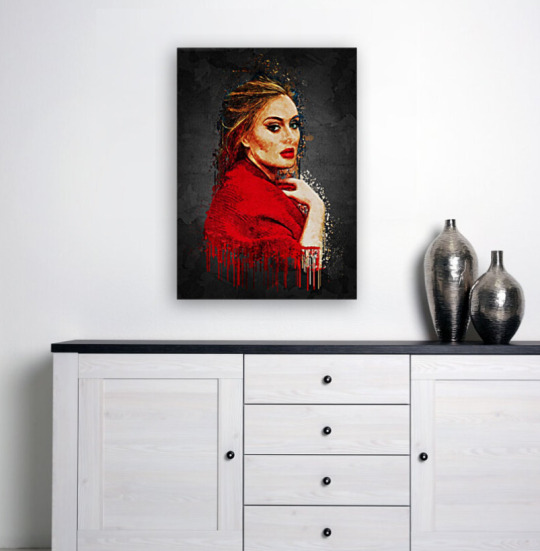
We didn’t have any arguments or tussles. There may have been some points where I said, “I think that line can be better,” and I always throw in lines of lyrics in my sessions, but at this one, Adele knew exactly what she wanted to say, and my role was much more in composing the music and creating chord changes for the various sections. For the pre-chorus, for example, I suggested a series of chords and we played with some melody ideas for it. Once we decided on the melody, she very quickly came up with that amazing line, “I hate to turn up out of the blue, uninvited.” Once you have a line that great, the rest of the section is easy to finish.
The predominant recollection I have is the sensation of effortless flow and utmost sincerity. As soon as the recording commenced, my utmost focus was on ensuring a remarkable vocal performance, as I began to perceive this as an extraordinary recording. Moreover, recording her was an absolute delight! Her voice resonated magnificently through the speakers, and I was resolute in my determination to create a song that sounded exceptional yet retained a sense of authenticity, vulnerability, and devastation.
On the second day, her voice had a rougher, more ragged edge, and I suggested we go back and re-record the last chorus so it would sound more emotional. And it did, it was heartbreaking.
What do you most enjoy about writing with Adele? She possesses exceptional intelligence, which greatly enhances the overall experience. Additionally, her delightful sense of humor, spontaneity, and captivating storytelling skills contribute to the enjoyment. Our collaborative writing sessions have consistently been fantastic and provided a wonderful and rejuvenating experience on all three occasions.
How would you describe “Someone Like You?” “Someone Like You” is a love song from the point of view of a woman who shows up unexpectedly at her married ex’s front door, only to be confronted by the fact that he’s moved on and has a life and a wife. While she has always struggled to move on, the chorus holds a sense of irony: she claims she will seek out another person, yet the peculiar and fixated aspect is that she desires someone similar to him. One can only hope that it won't entail reliving the entire melancholic and squalid narrative, but there is a lingering suspicion that it will indeed unfold in such a manner.
Any interesting story or tidbit about process of the song winding up on the album?
Read more: Songfacts Someone Like You by Adele
youtube
The album recording was initially intended as a demo, with the expectation that it would be transformed into a grander version featuring strings and angelic choirs, reminiscent of a powerful Chrissie Hynde power-ballad. However, to my surprise, by the end of the first day, the demo already sounded beautiful and deeply moving. Despite being only half-written, lacking lyrics for the second verse and the bridge, it had a profound impact. The following day, Adele visited the studio and shared her experience of playing the demo for her manager and mother. I felt a bit anxious about this, as I prefer to keep works-in-progress private. Curious, I inquired about their thoughts on the song. Adele replied, "My manager loves it and my Mum cried."
Which was kind of exciting.
When we finished the demo, I played it for my wife and then kinda forgot about it. For the next many months, I would hear sporadic reports from people who heard it, and everybody would tell me that it made them cry. It’s kind of funny, it seems like a very common response to the recording. At first, I thought people were crying because they know Adele and they felt the pain of her breakup and were being empathetic. But then after awhile, I kept hearing the same report from people who heard the song but don’t know Adele personally. They were crying too.
Walk us through a typical day in the life of Dan Wilson. Lately, I’ve been working about half the time on my second solo album. I’m in the “endgame,” where the tense question is, “Who will vanquish who – me or album two?” I think I’m winning. Last week I was in the studio having Aaron Redfield play drums on a song and Jonny Flower play upright bass on two other songs. Those days mostly consist of me sitting on the studio couch while they play, and saying things like, “That was incredible! Do it again!” Or “That was amazing! We’re done!”
Which is a nice way to spend a day.
When I am not occupied with the record, I have been collaborating with artists to write songs for their recordings. This experience is both fascinating and enjoyable, and it lacks the intense competition that my album has been bringing me lately.
If I’m writing with someone, I usually try to get all my phone calls, errands, overdub projects etc, finished in the morning, then meet my co-writer at noon. On the first day, we’ll shoot the breeze, show each other lots of favorite clips on YouTube, and generally talk about what kind of songs we might write. At some point I might go to the piano and improvise some music, or my collaborator might show me a bare-bones beginning of a song, and then we’ll take the rest of the day and maybe the next to work it up into something finished and hopefully great.
Read more: Songfacts Hello by Adele
Any words of wisdom or advice for aspiring songwriters, regarding both the craft and business?
Write a lot of songs. Many, many songs. Many issues that arise during the creation of a song can be resolved by initiating a fresh and distinct song. Share your concepts with others, do not hesitate and do not believe that there is any benefit in keeping them to yourself. It is extremely uncommon for a song idea to be stolen. The potential reward of showcasing your songs to people far outweighs the risk. Participate in open-mic nights, utilize Soundcloud, and explore any and all avenues to present your songs to an audience. You will be astonished by how much an audience can educate you.
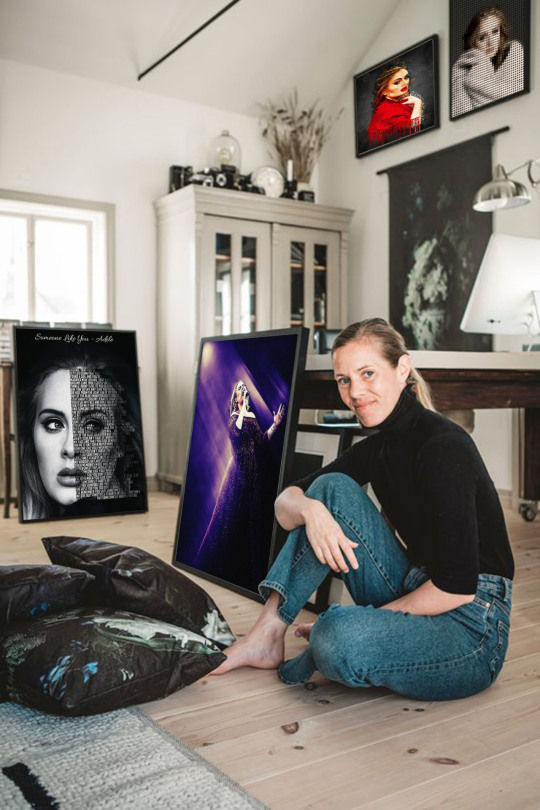
👇 All posters “Adele” found here 👇 🛒 Pictorem , iCanvas , Fine art Canvas, Displate , ElephantStock
0 notes
Text
Songfacts My Immortal by Evanescence
"My Immortal" is a song by American rock band Evanescence from their debut studio album, Fallen (2003). It was released by Wind-up Records on December 8, 2003 as the album's third single, following its inclusion on the soundtrack to the film Daredevil. The song was written by singer and pianist Amy Lee and guitarist Ben Moody when they were 15. Several versions were recorded, with the earliest in 1997. Wind-up used the recording from their 2000 demo CD on Fallen against Lee's wishes, which featured Lee's demo vocals and a MIDI keyboard. Strings from Daredevil composer Graeme Revell were added during the production of Fallen.
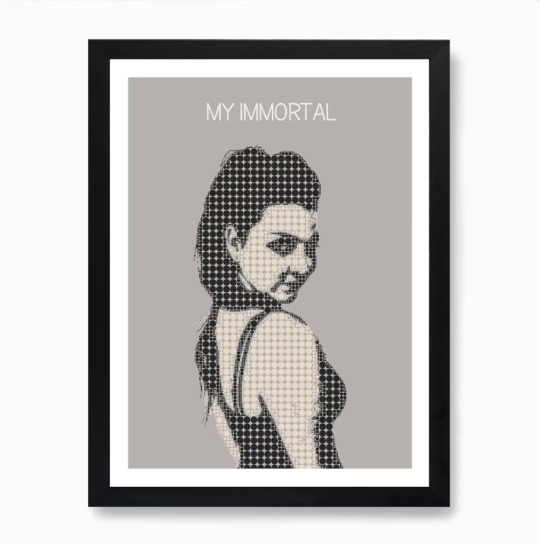
Poster by Displate , Pictorem
The single, dubbed "band version", is the re-recording Lee and Moody made for Fallen, featuring guitar, drums and bass after the bridge and a string arrangement by David Campbell. An alternative version of the song appears on the band's fourth studio album Synthesis (2017).
Song Fact
Evanescence guitarist Ben Moody wrote the lyrics for this song, fleshing it out with lead singer Amy Lee, who wrote the piano part and added the bridge. They recorded it for their first EP in 1998, but decided to remove it at the last minute. By the time it was released in 2003 on their debut album, Fallen, the song had gone through a number of changes.
According to Ben Moody, the lyrics are completely fictional. They evoke a certain essence, but he emphasizes that the song is unrelated to God or religion. Moody penned the lyrics while he was still in high school. The original version had some different lyrics.
After "Suppressed by all my childish fears" came two more lines:
I would give every breath from my chest To give you all the things that my mind could bear
And, instead of:
I've tried so hard to tell myself That you're gone But though you're still with me I've been alone all along
It was:
I love to walk away By myself out of the rain But I can't leave without you I love to live without the constant fear and endless doubt But I can't live without you
Multiple variations of this song have been released. The initial rendition is an unreleased track from the 1998 Evanescence EP, featuring only Lee's vocals and piano. In 2000, it was incorporated into Origin, a compilation of songs created by the band as a demo. This particular version includes additional background vocals by band member David Hodges.
Songfacts Bring Me To Life by Evanescence

Poster by Fy! , Pictorem , Displate
The song appeared in different forms on other samplers and demos the group issued leading up to Fallen, and when it was issued as a single, various versions were used for different releases. These later versions add a string section.
Evanescence exploded with their first single, "Bring Me To Life," which found an audience hungry for emotionally charged rock music delivered by a female lead singer - a rarity at the time. But their second single, "Going Under," made little impact, putting them in danger of evanescing. "My Immortal" brought them back to life; radio stations welcomed the song and MTV pushed the video, sending it to #7 US in April 2004, more than a year after Fallen was released. By this time, Amy Lee was the only member still in the band from the Fallen lineup; keyboard player David Hodges got out before the album was released, and Ben Moody broke down in the middle of their first tour, leaving in October 2003.
youtube
The video was directed by David Mould, known for his work on Gin Blossoms' "Hey Jealousy" and John Newman's "Cheating." It was filmed in Barcelona and features a prominent role played by Ben Moody, who was still a member of the band at the time. In one scene, Amy Lee can be seen walking on the edge of a fountain, but her feet are never shown touching the ground, suggesting that she portrays a spiritual entity.
Terry Balsamo, former guitarist of the band Cold, replaced Ben Moody on guitar for this album. Moody went on to work with Avril Lavigne.
Before it was released on the album Fallen, this song was used in a funeral scene in the movie Daredevil. The Evanescence song "Bring Me To Life" was also used in the film.
The song was covered by Andrea Begley on the UK edition of The Voice in 2013. Her version landed at #30 on the British singles chart after she sung it in the final, whilst Evanescence's original version also returned to the Top 40.
👇 All posters “Amy Lee - Evanescence” by 👇 Pictorem, Displate 🛒
0 notes
Text
Songfacts We Are Never Ever Getting Back Together by Taylor Swift
"We Are Never Ever Getting Back Together" is a track featured on Taylor Swift's fourth studio album, Red, which was released in 2012. The song serves as the lead single from the album and was made available for digital download and U.S. pop radio on August 13, 2012, through Big Machine Records. Swift collaborated with Max Martin and Shellback to write and produce the song. "We Are Never Ever Getting Back Together" combines various pop styles, incorporating pulsing synthesizers, processed guitar riffs, bass drums, and a spoken-word bridge. The lyrics express Swift's frustration towards an ex-lover who desires to reignite their relationship. Additionally, an alternative version of the song was released to U.S. country radio on August 21, 2012.
Album: Red (2012) Release Date: August 13, 2012
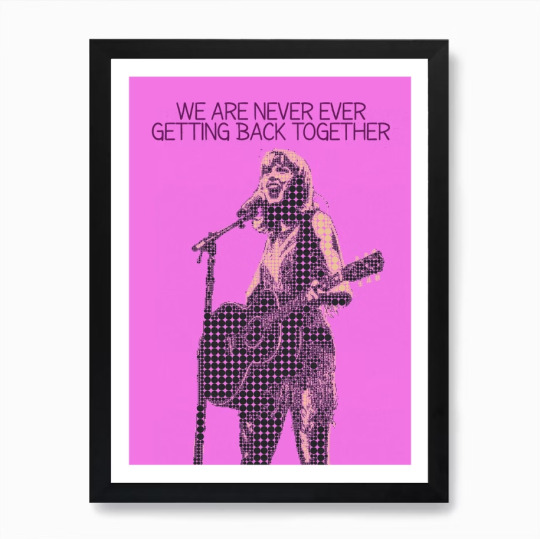
Taylor Swift's webchat with fans on August 13, 2012, revealed that "We Are Never Ever Getting Back Together" is a scornful yet playful song about one of her past romantic interests. Swift jokingly referred to it as a "really romantic song… touching and sensitive… to my lovely ex-boyfriend." When asked about the specific person the song is about, Swift playfully responded, "I'm trying not to be too cryptic with it, but I'm trying not to give it all away."
One potential celebrity candidate for the subject of the song is actor Jake Gyllenhaal, who had a relationship with Swift in late 2010 and early 2011. The song was inspired by an incident during a studio session with Max Martin and Johan Shellback, where a friend of Swift's ex-boyfriend walked in and started talking about rumors of a reconciliation between Swift and her ex. Swift clarified that this was not the case, and when the friend left, Max and Johan asked her about the story behind it. Swift then shared the story of the on-again, off-again nature of her relationship, which led to the creation of the song.
Max immediately suggested that they write a song based on this story, and Swift picked up the guitar and started singing the phrase "we are never." The song came together quickly and was a fun experience for Swift. As the lead single from her album Red, this song brought the spotlight back to Swift. It is a well-crafted pop song with subtle country influences, a style that Swift has found success with in the past. The song focuses on the pain of a failed relationship, a theme that resonates with Swift's teenage audience.
The composition blends a linear progression with a wide array of structural elements, resulting in an engaging and captivating listening experience. The chorus, in particular, offers a remarkably catchy melody and impactful lyrics, occupying a significant portion of the song's duration. The title of the song is cleverly incorporated throughout, making it easily memorable and catching the attention of casual listeners. Additionally, Swift intelligently revisits familiar thematic territory by focusing on a relationship, allowing her to solidify her musical identity while appealing to her dedicated fan base. The meticulous songwriting, relatable lyrics, and emphasis on pure pop stylings, rather than her country influences, make this an impressive and enticing introduction to Swift's album.
Read more: Songfacts Blank Space by Taylor Swift
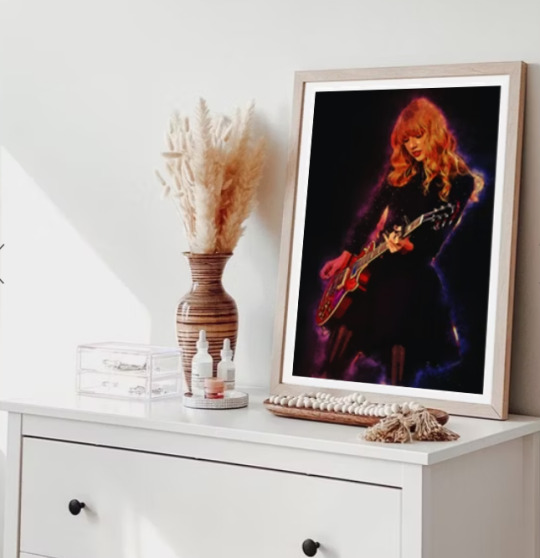
Poster by: Pictorem ,
According to Nielsen SoundScan, "We Are Never" achieved remarkable sales of 623,000 units in its debut week. This accomplishment not only secured Swift the title for the largest digital sales week for a song by a female artist but also marked the second-highest sales week overall, trailing only Flo Rida's "Right Round," which debuted with 636,000 units in February 2009.
Furthermore, this song marked Swift's first-ever chart-topping hit on the Hot 100. Previously, she had reached the second position with "You Belong With Me" in 2009 and "Today Was a Fairytale" in 2010.
This song made its debut at #13 on the Country Songs chart, marking the highest debut ever achieved by a female artist in the SoundScan era. Now, let's explore the previous #1 by a country act before this remarkable achievement. There are two potential answers to this question:
1) Prior to this song, Carrie Underwood's American Idol coronation song "Inside Your Heaven" claimed the top spot on the Hot 100 chart dated July 2, 2005. However, it is worth noting that at that time, Underwood's label had not yet begun promoting her as a country artist, resulting in the song only reaching #52 on the Country Songs chart.
2) Another notable contender is Lonestar's "Amazed," which held the #1 position on the Country Songs chart for an impressive eight weeks in 1999. Additionally, it also enjoyed two weeks at the top of the Hot 100 chart in 2000.
Swift's 46th entry on the Hot 100 chart marked her first #1 hit, surpassing the record previously held by Dionne Warwick. Warwick had appeared on the chart 39 times before finally reaching the top spot on her 40th attempt with "Then Came You," featuring the Spinners, in 1974.
The music video for the song was directed by Declan Whitebloom, who had previously collaborated with Swift on the visuals for "Mean" and "Ours." Shot using a Sony F65 Cinealta Camera, the music video was also notable for being the first to be featured in 4K resolution.
youtube
The video was shot in one continuous take with no edits and features Swift in five different outfits, which required some very quick costume changes by the singer. "All modesty had to go out the window," Swift said to MTV News about her five furiously fast outfit switches. "All my clothes were put together with Velcro and snaps so that I could have three different outfits layered on top of each other."
"The costume changes were really hectic," she continued. "[We did them] in real time; it was crazy. At one point, I had a breaking point. 'I can't do five costume changes, there's not enough time!' but we ended up being able to do it."
Swift's band was only told at the last minute that they'd be performing in fuzzy animal costumes in the video. "All of the sudden, they wheel in their costume rack, full of animal costumes, and they were so mad," Swift recalled to MTV News. "It was hilarious. They were so angry. It took a couple hours, but they finally embraced it. It ended up being absolutely hilarious; they are really funny in that video. They owned it."
Swift's ex-love interest in the video is played by Canadian model-turned-actor Noah Mills (Sex and the City 2). Mills told MTV News that he enjoyed creating his character from such lines as, "And you would hide away and find your peace of mind with some indie record that's much cooler than mine." He said: "You hear what the lyrics are saying and think, 'Okay, if you're talking about this album you're listening to that's cooler than mine, I know that I'm listening to some album and subliminally sending some messages that I'm not in love with your music,' so you pick that up and as the character you play it."
Swift explained the Red album title relates to the intensity of her emotions during a series of failed relationships that were often very public. "All those emotions," she said, "spanning from intense love, intense frustration, jealousy, confusion, in my mind, all those emotions are red. There's nothing in between; there is nothing beige about any of those feelings."
Swift came up with this break-up anthem to drive a former boyfriend "crazy" when he heard the tune played on the radio. He'd belittled her music, and Swift wanted to make the song as catchy as possible so its constant airplay would annoy him. She explained to USA Today: "(It's) a definitive portrait of how I felt when I finally stopped caring what my ex thought of me. (He) made me feel like I wasn't as good or as relevant as these hipster bands he listened to…
So I made a song that I knew would absolutely drive him crazy when he heard it on the radio. Not only would it hopefully be played a lot, so that he'd have to hear it, but it's the opposite of the kind of music that he was trying to make me feel inferior to."
The title of this song is a little cumbersome, and Swift said there were "lots of discussions" about what to call it. She preferred "We Are Never Ever Getting Back Together" from the start, telling Esquire: "It's very final, it's very aggressive, and it's not subtle."
Read More: Songfacts “Red” by Taylor Swift

Poster by Fy! , Pictorem , Urban arts , Art heroes
Swift offers a sarcastic dismissal to her hipster ex when she sings: "Hide away and find your peace of mind. With some indie record that's much cooler than mine." She told The Guardian: "That was the most important line of the song. It was a relationship where I felt very critiqued and subpar. He'd listen to this music that nobody had heard of … but as soon as anyone else liked these bands, he'd drop them. I felt that was a strange way to be a music fan. And I couldn't understand why he would never say anything nice about the songs I wrote or the music I made."
Taylor informed Digital Spy that she collaborated with Shellback and Max Martin to compose the song, completing it within a mere 25 minutes.
The song spent nine consecutive weeks at #1 on Billboard Country Singles, the most by a solo female artist in the history of the chart. The record was previously held by Connie Smith's "Once A Day," which spent eight weeks at peak position in 1964. Swift's run was the longest for any artist since David Houston stayed nine weeks with "Almost Persuaded" in 1966. The previous artist to have spent more than nine weeks at peak position on the country chart was Buck Owens, who led for 16 weeks in 1963-64 with "Love's Gonna Live Here."
Taylor selected this as Red's lead single primarily due to its infectious melody. She expressed to Radio.com that the choice of this particular track immediately stood out to her. Taylor would often share it with her loved ones, and within a few days, they would find themselves singing it, reciting every word. The song had an undeniable staying power that lingered in their minds.
Swift opened the Grammy Awards in 2013 with a performance of this song, changing the words in her vocal interlude to say that she's "busy opening the Grammy Awards." She was dressed like a sexy ringleader and backed by a circus performance. Once she took her seat in the audience, Taylor became the go-to cutaway, as she could be seen eagerly singing along to other performances throughout the show. Swift told US Elle that she writes about her personal relationships to feel better. "To me it's just writing songs the way I always have," she said. "It's me sitting on my bed feeling pain I didn't understand, writing a song, and understanding it better. If people want to dissect the lyrics, that's their right, but it's all coming from the exact same place as where I started. It's just something I do to feel better."
In the 2014 edition of the Guinness Book of Records, this particular song secured a place for itself. Within a mere 50 minutes of its release, it soared to the top spot on iTunes, making it the fastest-selling digital single. However, this record was later surpassed by Ariana Grande's "Problem," which achieved the same feat in just 37 minutes after its release on April 28, 2014.
Furthermore, Taylor was recognized in the same edition of the book as the first female artist to have two million-selling weeks on the US album chart as a solo artist since records began in 1991.
Taylor Swift Biography
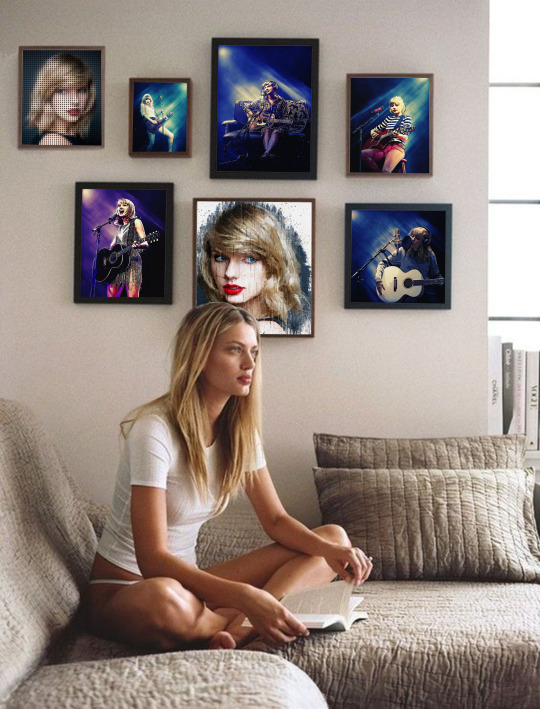
👇 All posters of ��Taylor Swift” are found here 👇 🛒 Pictorem , iCanvas , Urban arts, Displate , ElephantStock , Juniqe 🛒
0 notes
Text
Songfacts Lucid Dreams (Forget Me) by Juice WRLD
Album: Goodbye & Good Riddance (2018) Released: May 4, 2018 Recorded: 2017
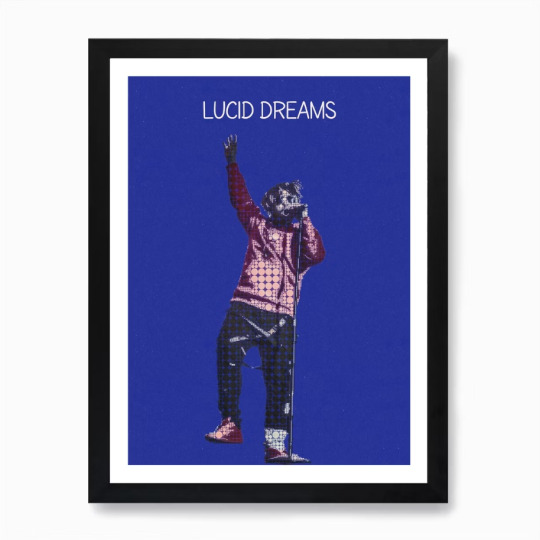
Jared Higgins is an emo-leaning Chicago rapper whose performing name Juice WRLD was inspired by the 1992 2Pac film Juice. Higgins began to develop himself as an artist in his freshman year of high school, but really started to pop up on the nationwide hip-hop radar with this track.
Lucid dreaming is a state of consciousness in which a person is awake enough to be aware that they are dreaming. They happen most frequently when somebody drifts off for half an hour during the day time. The dreamer may be able to exert some degree of control over the dream narrative. During this song, Higgins links the concept to sleep paralysis, a psychological phenomenon where a brain is active and awake but the person's body is still asleep, meaning the sleeper is aware but unable to move or speak.
I have these lucid dreams where I can't move a thing Thinking of you in my bed.
Higgins uses the analogy of lucid dreaming and sleep paralysis to describe his heartbreak following a break-up. The rapper keeps seeing his ex-lover in his dreams, which leaves him in such mental anguish, he is left feeling paralyzed.
The song was produced by Nick Mira, who also supplied the beat for Juice WRLD's "All Girls Are the Same." His instrumentation samples the guitar intro of Sting's "Shape Of My Heart", a 1993 track from The Police frontman which was previously sampled by Nas on "The Message" in 1996.
"My producer sung me the beat, and then when I heard it, I was like, 'Oh, wow, that's a Sting sample,' Juice WRLD recalled to Billboard. "I think it was like eight bars of the song. That was like the beat that carried the whole beat, the melodies, all of it. It all revolved around the sample."
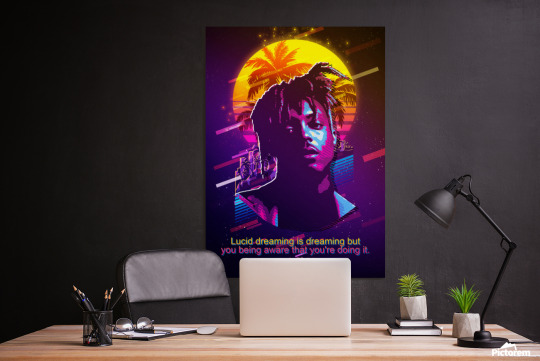
Poster by Pictorem or Displate
Juice WRLD garnered his first entries on a Billboard chart when on the Hot 100 dated May 28, 2018, "All Girls Are The Same" debuted at #92 and "Lucid Dreams" at #74.
Other artists that have recorded songs about lucid dreams include Franz Ferdinand and Soja.
Asked by Billboard what led him to sample "Shape of My Heart," Juice pointed to the power of mixing genres, which he defined as "taking two things that you wouldn't think would go together and showing people that they could be perfectly put together."
Sleep paralysis is something that Juice knows a lot about, having experienced it for much of his life. He told Genius: "If something bothering me, I have it, if I'm going through stress and s--t, I have it. It's still the same feeling as it was when it first started, still the same amount of fear, it does not get old. It's scary, you can be laying right next to somebody and if they not paying attention, they won't even know you having it."
Asked about the song's takeaway message, Juice replied: "I want people to know is, just be aware of your feelings. Really, just be aware of your feelings, and I think that's pretty much what it did for people, in a way."
Juice WRLD wasn't the first artist to successfully borrow from "Shape Of My Heart." Back in 2003 both the Sugababes and Craig David had hit singles in the UK with songs that sampled Sting's track. So what does Sting think about Juice utilizing his song for a rap track? Turns out, he's a fan - the Police frontman told Billboard it's a "beautiful interpretation that is faithful to the original song's form."
youtube
"Shape Of My Heart" co-writer and Sting's longtime guitarist Dominic Miller also gives Juice's interpretation the thumbs up. "I thought it was the most intelligent version of that riff that I've ever heard," he says. "I was really happy with it. I love what he's saying. He talking about something everyone can relate to, which is a breakup. It's done in a very beautiful way. We're really happy for his success and, of course, for us too."
Speaking to NME in a 2019 interview, Juice admitted that he's tired of this track and hates it "with a P-A-S-S-ion," but still performs it out of duty to his fans.
Pop-punk band Yellowcard filed a complaint on October 21, 2019, in US District Court in California claiming "Lucid Dreams" ripped off parts of their 2006 track "Holly Wood Died."
Former members of Yellowcard - the group disbanded in 2017 - alleged that Juice WRLD and his co-writers plagiarized melodic elements from their song "without license or consent." The band also provided a chart that analyzed both tracks, noting similar elements like hooks and vocal melodies.
Yellowcard asked for damages in excess of $15 million and a "running royalty and/or ownership share" on all future exploitations related to "Lucid Dreams."
Rapper Juice WRLD’s death at 21 makes him the latest young artist to join the ‘21 Club’

Yellowcard announced on July 28, 2020, the withdrawal of their copyright infringement lawsuit. The band's lawyer explained they "really were uncomfortable about pursuing this action against Juice WRLD's grieving mother as the representative of his Estate."
However, the lawyer also stressed that the dismissal was without prejudice, meaning the action could be re-filed in the future.
👇 All posters “Juice WRLD” can be found here 👇 🛒 Pictorem , iCanvas , Urban arts , Displate , ElephantStock , Juniqe 🛒
#shape of my heart#juice wrld#lucid dreams#song of the year#greatest songs of all time#best rap song#rapper#american rapper#Youtube
0 notes
Text
Songfacts Wait and Bleed by Slipknot
Album: Slipknot (1999) Recorded: 1998 at Indigo Ranch, Malibu, California

"Wait and Bleed" is a song by American heavy metal band Slipknot. Released as the band's debut single off their 1999 self-titled debut album. After being remixed to replace the screamed vocals in the verses with more melodic singing, it was released as the lead single from the album in July 1999, and peaked at number 34 on the American Billboard Hot Mainstream Rock Tracks chart in February 2000. It remains one of the band's signature songs.
Joey Jordison recalled in an interview with Kerrang!: "I wrote the music for 'Wait and Bleed' on my own… I showed it to the guys at rehearsal, and then Corey wrote some lyrics really fast in our practice space… He took us to a new level immediately." "The song's about that switch in your head that can go at any moment," noted Corey Taylor. "You go from being a civilized human being to someone who can commit terrible acts. I've always been fascinated by the fact we represent ourselves as civilized when, at any moment, we can become animals."
This is about a man who keeps having repetitive black and white dreams about laying in a bathtub full of his own blood with his wrists slit. One day he wakes up and sees that his dream has become a reality, but he doesn't want to believe it and he tries to fall back asleep again.
Read more: Corey Taylor Biography
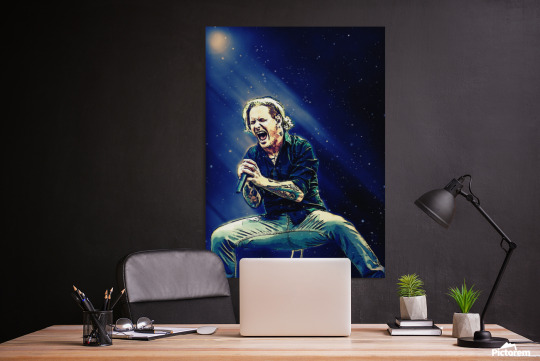
On the Digipack of their self-titled release, there is a remix of the song mixed by Terry Date. This is the version usually played by radio stations.
Slipknot drummer Chris Fehn (#3) told us about this track: "It was just a basic song. We didn't know it was going to be that popular. The funny thing is the record label, especially new guys at the record label, were coming around when we started getting big, and they're like, 'Oh, the next record you can write like three Wait And Bleeds.' And we're just like, You are an idiot. Therefore, we don't do that. But obviously the band, believe it or not, we have so much control over what we do that we don't write anything for money, we don't write anything for popularity, we have to like it first. And it's just a song that we liked, and it just so happened that it got on the radio and got the attention that we didn't expect." (Check out our interview with Chris Fehn.)
In the lyrics when Corey says, "I am a victim, a Manchurian Candidate!," he is referring to a movie from 1962 about communist mind control. The picture on the album cover was taken in Shawn Crahan's parents' garage.
youtube
Thomas Mignone directed the video. His other credits include "Death Blooms" and "Dig" for Mudvayne and "Dress Like a Target" for Superjoint Ritual.
Asked by Revolver in 2023 what he considers to be Slipknot's most overrated song, Corey Taylor chose this one. "I'm very much on the record saying that 'Wait and Bleed' is a pain in my f---ing ass," he said. "I've been singing it for 26 years and it hasn't gotten easier, folks!" he admitted. "But I still sing it with Slipknot and with my solo project, which tells you how much of a psycho I am, because I know people love that song. So, you gotta do it - and listen, it's a good problem to have."
👇 All posters “Corey Taylor” can be found here 👇 🛒 Art Heroes , Pictorem , iCanvas , Werk aan de Muur , Urban arts , Fy! , Displate 🛒
0 notes
Text
Songfacts Roadhouse Blues by The Doors
"Roadhouse Blues" is a song by the American rock band the Doors from their 1970 album Morrison Hotel. It was released as the B-side of "You Make Me Real", which peaked at No. 50 on the U.S. Billboard Hot 100 and No. 41 in Canada. "Roadhouse Blues" charted in its own right on the Cash Box Top 100, peaking at No. 76. The song became a concert staple for the group and it has been covered by numerous artists.

Poster by Pictorem
Recorded: November 4–5, 1969 Released: March 1970 Album: Morrison Hotel (1970)
When Jim Morrison got drunk, he liked to sing blues numbers at The Doors jam sessions. This in one of the songs he came up with at one of those inebriated sessions.
If there was an actual roadhouse that inspired this song, it was probably the Topanga Corral, a windowless nightclub in the counterculture enclave of the Topanga Canyon, where Jim Morrison lived. To get to the venue you had to take Topanga Canyon Boulevard, which is full of twists and turns - you really did need to "keep your eyes on the road, your hand upon the wheel."
The Corral, where Little Feat and Canned Heat played and Linda Ronstadt was often spotted in the audience, burned down in 1986.
There was a cabin behind the Topanga Corral that many sources say Morrison bought for his girlfriend, Pamela Courson. This could be what provided the line, "In back of the Roadhouse they got some bungalows."
John Sebastian from the Lovin' Spoonful played harmonica. He is identified on the album as "G. Puglese" because he was afraid to be identified with The Doors in light of Morrison's arrest at a concert in Miami when he was accused of exposing himself to the crowd. Morrison was convicted of indecent exposure and sentenced to six months in jail, but he died while the case was being appealed. In 2010, Florida governor Charlie Crist granted Morrison a pardon, clearing him of the charges.
Read more: Biography Jim Morrison (1943–1971)
Guitar great Lonnie Mack played bass. The Doors usually did not use a bass player.
Doors guitarist Robby Krieger joined Creed on stage at Woodstock '99, where they performed this. It is on the Woodstock '99 CD.
This is the first song on Morrison Hotel. The album was a return The Doors' earlier style. On their previous album, The Soft Parade, they used a lot of strings and horns. Morrison didn't do much on that album because he was drunk for most of it and had nothing to do while all the instrumentation was being worked out. Before The Doors had a record deal, they played many Blues songs in their long club shows.

Outtakes from one of Morrison's recording sessions were used to dub his voice into a version of this on the 2000 tribute album Stoned Immaculate, where he duets with John Lee Hooker.
In 2000, the surviving members of the Doors taped a VH1 Storytellers episode with guest vocalists filling in for Morrison. Scott Stapp from Creed sang on this.
This was released as the B-side of "You Make Me Real." The Doors occasionally recorded old blues songs, but even though this sounds like it could have been one of them, the wrote it themselves. This has been called "the ultimate bar song," and it continues to be played by bar bands everywhere.
Doors guitarist Robby Krieger recalled to the NME July 17, 2010 how the album title came about: "Ray (Manzarek, keyboards) had been driving around downtown LA, and he saw this place called Morrison Hotel. So we decided to go down and shoot some photos there, but the guy who owned the hotel wouldn't let us inside it. I guess they thought we were hippies. There were a lot of drunks and bums hanging around that area. Anyway, we snuck in there real quick when he wasn't looking and got the shot that became the cover of Morrison Hotel."
Read More: The Doors Close On Jim Morrison
youtube
The Doors put together a video for this song using footage shot for a tour documentary called Feast Of Friends that was never completed. Status Quo covered this song on their 1972 album Piledriver, and the song quickly became a live favorite for the band. The group was wildly successful in England, and like many UK acts, was influenced by American rockers, often doing successful covers (their version of John Fogerty's "Rockin' All Over The World" went to #3 in the UK). They were never able to conquer America, however, in part because they didn't tour there until 1973.
👇 All posters “Jim Morrison” can be found here 👇 🛒 Pictorem , Urban arts , Fine art Canvas, Displate 🛒
0 notes
Text
25 May 1948 - Witold Pilecki executed
Event-based song: Inmate 4859 Album: Heroes
Inmate 4859 The story of Witold Pilecki is as tragic as it is heroic. He was born in the Russian Empire near the Finnish border in 1901, spent his youth as part of the nationalistic Polish pathfinders and fought in independent Poland’s new army against the Soviets in the Polish-Soviet War. He lived a peaceful life for much of the interwar years, but eventually returned to the army reserves, and in 1939, was mobilised against the German invasion.
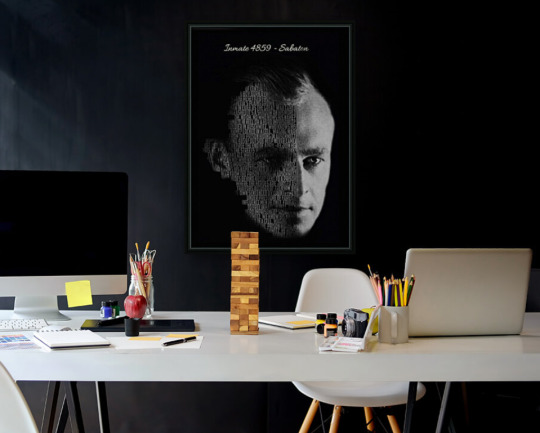
Poster by Displate , Pictorem
Pilecki’s Ulan regiment was shattered by the advancing Wehrmacht, but he joined other Polish stragglers and kept fighting until the fall of Warsaw. In late October, he disappeared into the underground, where he joined the resistance movement of the Tajna Armia Polska, an arm of the Armia Krajowa, the Polish ‘home-army’. One of their tasks was to get inside knowledge about German prisoner of war camps, and one camp in particular, in the small town of Oswiecim, Auschwitz in German, where many Poles simply disappeared. It was suspected that they were sent to Germany as forced labour, but no one knew for sure.
A dangerous plan Pilecki came up with a dangerous plan. He would personally infiltrate Auschwitz, uncover the truth, and organise resistance in the camp. On September 19, 1940, using the alias Tomasz Serafinski, he intentionally walked into a German security sweep on the streets of Warsaw. SS-men seized him and the next day he was herded alongside other Poles into trucks at the Warsaw train station. All day they drove east, the men pressed together without food or water. The rest of this story is told directly from the source material, from Pilecki’s personal report about his experiences in the camp.
Arriving at the camp, Pilecki and the crowd of men were driven forward by brutal beatings from the guards. Some men were pulled out of the group at random, unprovoked, and shot in the head to break any thoughts of resistance. Accompanied by the laughter of the guards, they were then pushed on past the barbed wire and towards the parade ground, where a group of men in striped clothes was waiting for them. These men jumped the newcomers with fists and clubs – some were beaten to death. The men in the striped clothes asked them questions about their background and jobs, and those who said academics or doctors were knocked to the ground. With boots kicking against their heads, their murderers proclaimed that this is the “Concentration Camp Auschwitz, my good man!”
Living hell His head shaved, Pilecki hurried out of the bathhouse, though a guardsman knocked out two of his front teeth because he did not hold the sign with his prison number between them. From now on, Pilecki was neither himself, nor Tomasz, but a number – prisoner 4859. In his paper thin blue and white striped uniform and a pair of ill-fitting wooden shoes, he found himself on the parade ground once again. There, he encountered the murderous men again. They were called “Kapos”, prisoner functionaries. Often German or Polish criminals, they were tasked with keeping things in line inside the camp, since the regular SS-men lived in barracks outside. Most of the Kapos were violent sadists who enjoyed brutally beating and torturing the helpless prisoners. Wearing yellow armbands with the Kapo label, they also oversaw the labour companies, to one of which Pilecki was assigned.
youtube
In that labour company it became clear that Auschwitz aimed to first exterminate the Polish intelligentsia. Prisoners with academic backgrounds who were not used to demanding physical work, or who lacked the experience and the dexterity to work in the quarries, were mercilessly beaten to death by the Kapos. Being too exhausted to lift another brick or push a wheelbarrow was also a death sentence. Every evening fewer people returned to the main camp.
Every walk to the latrines and every trip to the bathhouse was accompanied by beatings and harassment. Those who came late to morning parade or tried to hide away were hunted down, dragged to the parade ground, and either hanged or shot in front of the others.
Many tried to kill themselves, usually early in the morning before the day of torture began. If anyone tried to escape, the whole block was punished for it, standing out in the open for hours, or doing punishment sports, where men too exhausted to lift their arms fell and died under the boots of the Kapos. Often, the only time to catch your breath was when they were busy murdering another prisoner. Pilecki’s good physical condition saved him from this fate, but for how long?
Building the resistance Pilecki set out to build his first resistance cell – a group of five men. Later he would create other groups, but none of them knew of the existence of the others, so in case they were captured and tortured they could not betray the whole network. Those groups would either organise food or clothing, or would help other members to get a job, since it was clear from day one that staying in the worker groups, even well-conditioned men like Pilecki would soon die. So many of those worker prisoners did, in fact, die. that the prisoners had to build the first camp crematorium. Pilecki noted that the “camp became one big mill, which ground living people to ash.”
In 1941, as more and more prisoners were brought in, the camp grew. Larger fences were needed, as well as more barbed wire and more guard towers. And as Auschwitz grew, it needed to feed itself and this opened up jobs for the older prisoners. With careful planning, Pilecki got his groups into the carpenters, the postal service and the barbers. He eventually got himself a job as a repairman for an oven inside an SS-man’s house outside the camp. Upon leaving the living hell of Auschwitz, he returned to a world of lavish gardens, laughing children at play, and villagers having normal everyday conversations with one other.
Pilecki felt the questions burning inside him. What was the real world? What was the real nature of man? What was the culture of the 20th century? Since mankind had advanced so far from the barbarism of old, how was this still possible? Or was it the true face of humanity? Would the whole world look like this if the boundaries of civilization disappeared?
Each morning he and the other prisoners found themselves surprised to still be alive, their bodies thin to the bone, black and blue from the daily beatings, riddled with lice and fleas, living on a starvation diet. Only his daily mantra: “You’re not giving up”, helped Pilecki keep on, and he tried to inspire others to do the same. Survival was only possible through friendship and mutual help. Loners didn’t last long.
Now, up until May 1941 it was possible for ordinary Poles to be released from Auschwitz, mostly by their families paying enormous sums to the Germans. Those released prisoners smuggled Pilecki’s notes to the Armia Krajowa, but when the war between Germany and the Soviet Union began, this stopped. Instead, new groups began arriving to the camp. Many were now Jews, and by the end of August the first Soviet prisoners were transported to Auschwitz.
The start of the gas chambers Pilecki reports that one day 700 officers were tightly packed into a room all day, until finally, a group of German soldiers with gas masks on threw gas containers inside. This was the first act of gassing people with Hydrogen Cyanide at Auschwitz, according to Pilecki. Soon after, on his way to work, he passed groups of naked Soviet prisoners waiting to be led into to the crematorium, where they were gassed and burned.
The Kapos were often brutal savages, but the bestiality of some of the SS guards was even worse. Pilecki tells of guard dogs trained to go for the throats of prisoners, the torture of smashing testicles with a hammer and many stories far too nightmarish to tell. Now with his cells set up in important positions all over the camp, Pilecki was ready to start a revolt, but needed help from the outside to be successful. The prisoners were thirsty for revenge and ready for anything, since they did not fear death after everything they had endured. But even if they managed to overwhelm the guards and take the camp, they would not be able to hold it for long. Pilecki believed that the Armia Krajowa had received at least one of his messages. He had urged them to stage an attack, send in paratroopers from the free Polish army over in Britain, or drop a crate of arms onto them – something. But so far, nothing.
Without help from the outside, Pilecki’s third Christmas in Auschwitz came and went, and Auschwitz was now changing. There was no longer collective punishment, no outright murder or even everyday brutality, or at least it was toned down. Auschwitz became a factory, which would now systematically murder its prisoners instead of individualistic, random killing. Not with the batons of the Kapos but with Phenol and Gas. There were three crematoriums working simultaneously, able to burn corpses within minutes.
Breaking out By April 1943, more and more of the surviving Poles were sent out of Auschwitz to make room for Jewish prisoners from all over Europe and the Soviet Union. This meant the end of Pilecki’s network, as its members were sent to other camps. After two years and seven months of surviving in Auschwitz, Pilecki decided it was time to break out, since an uprising was no longer possible.
He got a night shift job at a bakery outside the camp. Shortly after Easter, as one guard was asleep, he and two other men pushed the door open and ran. Shots cracked behind them but they ran all night and all day until they reached a small town. With help of patriotic Poles, Pilecki smuggled himself back to Warsaw where, on August 23, 1943, after nearly 1,000 days in Auschwitz, he met with commanders of the Armia Krajowa, telling them of his experiences, all the death and torture, but people hesitated to believe him. It all seemed too unbelievable, even for the hated Germans to do all this killing. They knew it was bad, but not this bad.
Pilecki would stay in the underground army and fight in the Warsaw Uprising of 1944, he was later interned in prisoner of war camps, and after liberation in 1945 was assigned to the II Corps of the Polish Army in Italy, where he turned in his report about Auschwitz to the British.
For Pilecki, Auschwitz was the symbol of the Polish struggle for existence. He himself could never go back to a normal civilian life after his experience. He maintained contact with the underground resistance – now against the Soviet Union – after the war, and indeed returned to Poland in late 1945 to report on the Soviet occupation.
He lived and worked undercover, but on May 8, 1947 the Ministry of Public Security captured him. He was tortured and dragged before a kangaroo court and accused of many things, including espionage and planning an armed uprising. The sentence was death. On May 25, 1948, in the Mokotow Prison in Warsaw, Witold Pilecki was executed. His final resting place is unknown. In 1990, Pilecki – and others from that show trial – were rehabilitated and today, he is celebrated, and for good reason, as a Polish patriot and hero.
Witold Pilecki’s heart-wrenching story inspired from song, ‘Inmate 4859’.
If you prefer a visual representation of this story, watch our Sabaton History episode, Inmate 4859 – Witold Pilecki:
youtube
0 notes
Text
John Lennon Biography (1940-1980)
Famed singer-songwriter John Lennon founded the Beatles, a band that impacted the popular music scene like no other.
Who Was John Lennon? Musician John Lennon met Paul McCartney in 1957 and invited McCartney to join his music group. They eventually formed the most successful songwriting partnership in musical history. Lennon left the Beatles in 1969, and later released albums with his wife, Yoko Ono, among others. On December 8, 1980, he was killed by a crazed fan named Mark David Chapman.
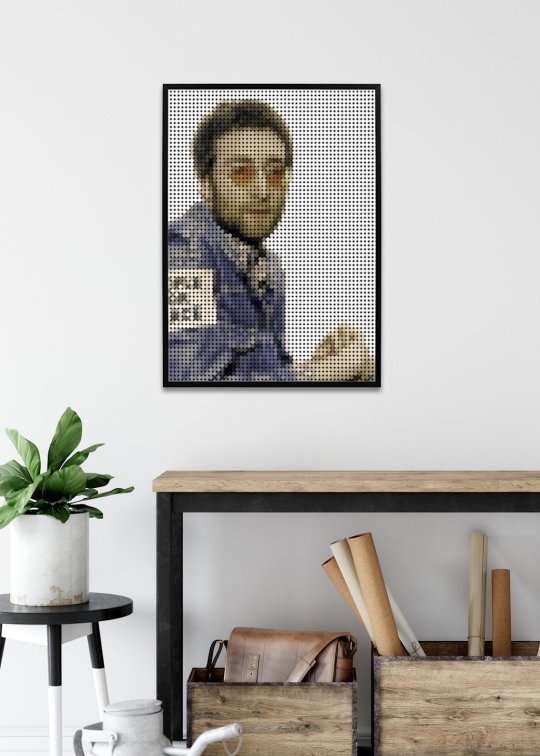
Poster by Printler
Early Life John Winston Lennon was born on October 9, 1940, in Liverpool, Merseyside, England, during a German air raid in World War II.
When he was four years old, Lennon's parents separated and he ended up living with his Aunt Mimi. Lennon's father was a merchant seaman. He was not present at his son's birth and did not see a lot of his son when he was young.
Lennon's mother, Julia, remarried but visited him and Mimi regularly. She taught Lennon how to play the banjo and the piano and purchased his first guitar. Lennon was devastated when Julia was fatally struck by a car driven by an off-duty police officer in July 1958. Her death was one of the most traumatic events in his life.
As a child, Lennon was a prankster and he enjoyed getting into trouble. As a boy and young adult, he enjoyed drawing grotesque figures and cripples. Lennon's school master thought that he could go to an art school for college since he did not get good grades in school but had artistic talent.
Forming the Beatles Elvis Presley's explosion onto the rock music scene inspired a 16-year-old Lennon to create the skiffle band called the Quarry Men, named after his school. Lennon met Paul McCartney at a church fete on July 6, 1957. He soon invited McCartney to join the group, and the two eventually formed one of the most successful songwriting partnerships in musical history.
McCartney introduced George Harrison to Lennon the following year, and Harrison and art college buddy Stuart Sutcliffe also joined Lennon's band. Always in need of a drummer, the group finally settled on Pete Best in 1960.

Poster by Pictorem , Urban arts
The first recording they made was Buddy Holly's "That'll Be the Day" in 1958. In fact, it was Holly's group, the Crickets, that inspired the band to change its name. Lennon would later joke that he had a vision when he was 12 years old — a man appeared on a flaming pie and said unto them, "From this day on, you are Beatles with an 'A.'"
The Beatles were discovered by Brian Epstein in 1961 at Liverpool's Cavern Club, where they were performing on a regular basis. As their new manager, Epstein secured a record contract with EMI. With a new drummer, Ringo Starr (Richard Starkey), and George Martin as a producer, the group released their first single, "Love Me Do," in October 1962. It peaked on the British charts at No. 17.
Lennon wrote the group's follow-up single, "Please Please Me," inspired primarily by Roy Orbison, but also fed by Lennon's infatuation with the pun in Bing Crosby's famous lyrics, "Oh, please, lend your little ears to my pleas," from the song "Please." The Beatles' "Please Please Me" topped the charts in Britain. The Beatles went on to become the most popular band in Britain with the release of such mega-hits as "She Loves You" and "I Want To Hold Your Hand."
Lennon married Cynthia Powell in August 1962. The couple had one son together, Julian, who was named after Lennon's mother. Cynthia was forced to keep a very low profile during Beatlemania. She and Lennon divorced in 1968. He remarried the following year, on March 20, 1969, to Japanese avant-garde artist Yoko Ono, whom he had met at the Indica Gallery in November 1966.
Beatlemania In 1964, the Beatles became the first British band to break out big in the United States, beginning with their appearance on television's The Ed Sullivan Show on February 9, 1964. Beatlemania launched a "British Invasion" of rock bands in the United States that also included the Rolling Stones and the Kinks. Following their appearance on Sullivan, the Beatles returned to Britain to film their first film, A Hard Day's Night (1964), and prepare for their first world tour.
The Beatles' second film, Help!, was released in 1965. That June, Queen Elizabeth II announced that the Beatles would be named a Member of the Order of the British Empire. In August 1965, the foursome performed to 55,600 fans at New York's Shea Stadium, setting a new record for largest concert audience in musical history. When the Beatles returned to England, they recorded the breakthrough album Rubber Soul (1965), noted for extending beyond the love songs and pop formulas for which the band was previously well-known.
The magic of Beatlemania had begun to lose its appeal by 1966. The band members' lives were put in danger when they were accused of snubbing the presidential family in the Philippines. Then, Lennon's remark that the band was "more popular than Jesus now" incited denunciations and Beatles record bonfires in the U.S. Bible belt. The Beatles gave up touring after an August 29, 1966, concert at San Francisco's Candlestick Park.
After an extended break, the band returned to the studio to expand their experimental sound with drug-influenced exotic instrumentation/lyrics and tape abstractions. The first sample was the single "Penny Lane/Strawberry Fields Forever," followed by the album Sgt. Pepper's Lonely Hearts Club Band (1967), considered by many to be the greatest rock project in musical history.
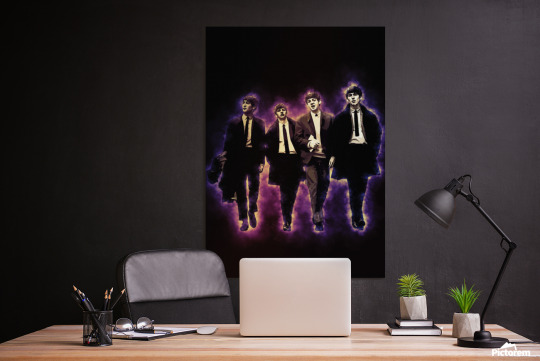
Poster by Urban arts , Pictorem
The Beatles Break Up The Beatles then suffered a huge blow when Epstein died of an accidental overdose of sleeping pills on August 27, 1967. Shaken by Epstein's death, the Beatles retrenched under McCartney's leadership in the fall and filmed Magical Mystery Tour. While the film was panned by critics, the soundtrack album contained Lennon's "I Am The Walrus," the group's most cryptic work yet.
Magical Mystery Tour failed to achieve much commercial success, and the Beatles retreated into Transcendental Meditation and the Maharishi Mahesh Yogi, which took them to India for two months in early 1968. Their next effort, Apple Corps Ltd., was plagued by mismanagement. That July, the group faced its last notably hysterical crowd at the premiere of their film Yellow Submarine. In November 1968, the Beatles' double-album The Beatles (also known as The White Album) displayed their divergent directions.
By this time, Lennon's artist partnership with second wife Ono had begun to cause serious tensions within the group. Lennon and Ono invented a form of peace protest by staying in bed while being filmed and interviewed, and their single "Give Peace a Chance" (1969), recorded under the name "the Plastic Ono Band," became a national anthem of sorts for pacifists.
Read more: The inspirational story of the song “Let It Be”
Lennon left the Beatles in September 1969, just after the group completed recording Abbey Road. The news of the break-up was kept secret until McCartney announced his departure in April 1970, a month before the band released Let It Be, recorded just before Abbey Road.
Solo Career: 'Imagine' Album Not long after the Beatles broke up, in 1970, Lennon released his debut solo album, John Lennon/Plastic Ono Band, featuring a raw, minimalist sound that followed "primal-scream" therapy. He followed that project with 1971's Imagine, the most commercially successful and critically acclaimed of all Lennon's post-Beatles efforts. The title track was later named No. 3 on Rolling Stone magazine's "All-Time Best Songs" list.
Songfacts Imagine by John Lennon
youtube
Peace and love, however, was not always on Lennon's agenda. Imagine also included the track "How Do You Sleep?," a vehement response to veiled messages at Lennon in some of McCartney's solo recordings. The friends and former songwriting duo later buried the hatchet, but never formally worked together again.
Lennon and Ono moved to the United States in September 1971, but were constantly threatened with deportation by the Nixon Administration. Lennon was told that he was being kicked out of the country due to his 1968 marijuana conviction in Britain, but the singer believed that he was being removed because of his activism against the unpopular Vietnam War. Documents later proved him correct. (Two years after Nixon resigned, in 1976, Lennon was granted permanent U.S. residency.)
In 1972, while battling to stay in America, Lennon performed at Madison Square Garden in New York City to benefit mentally handicapped children and continued to promote peace. His immigration battle took a toll on Lennon's marriage, and in the fall of 1973, he and Ono separated. Lennon went to Los Angeles, California, where he partied and took a mistress, May Pang. He still managed to release hit albums, including Mind Games (1973), Walls and Bridges (1974) and Rock 'n' Roll (1975). During this time, Lennon famously collaborated with David Bowie and Elton John.
Lennon and Ono reconciled in 1974, and she gave birth to their only child, a son named Sean, on Lennon's 35th birthday (October 9, 1975). Shortly thereafter, Lennon decided to leave the music business to focus on being a father and husband.
Tragic Death In 1980, Lennon returned to the music world with the album Double Fantasy, featuring the hit single "(Just Like) Starting Over." Tragically, just a few weeks after the album's release, Mark David Chapman, a deranged fan, shot Lennon several times in front of his apartment complex in New York City. Lennon died at New York City's Roosevelt Hospital on December 8, 1980, at the age of 40.
Lennon's assassination had, and continues to have, a profound impact on pop culture. Following the tragic event, millions of fans worldwide mourned as record sales soared. And Lennon's untimely death still evokes deep sadness around the globe today, as he continues to be admired by new generations of fans. Lennon was posthumously inducted into the Songwriters Hall of Fame in 1987, and the Rock and Roll Hall of Fame in 1994.
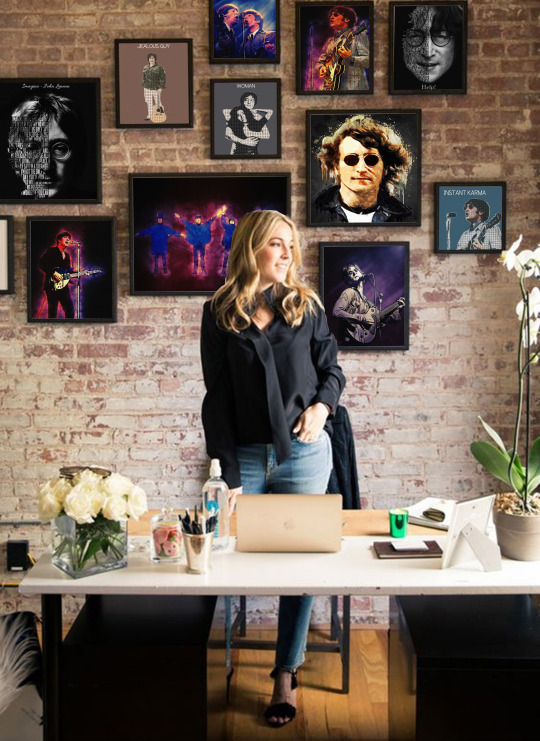
All posters “John Lennon” are found here 👇 🛒 Pictorem , iCanvas, Urban arts, Displate , Fine art Canvas , ElephantStock , Juniqe 🛒
0 notes